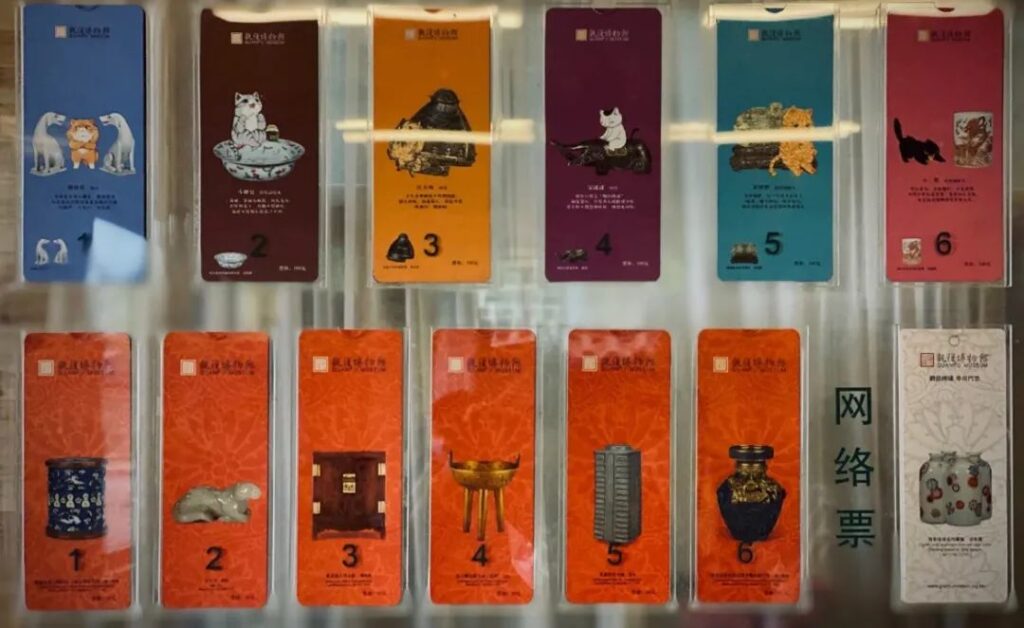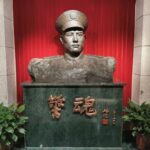The Guanfu Museum, located in the Shanghai Lujiazui financial district, is a private museum owned by the renowned collector Ma Weidu.

To reach the Guanfu, one needs to first enter the Shanghai Tower, one of the “Big Three” landmarks on the Bund, and then take the elevator to the 37th floor. This area is one of the most talent-packed places in Shanghai, and it is surprising to find a museum focused on Chinese antiques hidden within such a modern skyscraper, with the offices of JPMorgan Chase just upstairs.
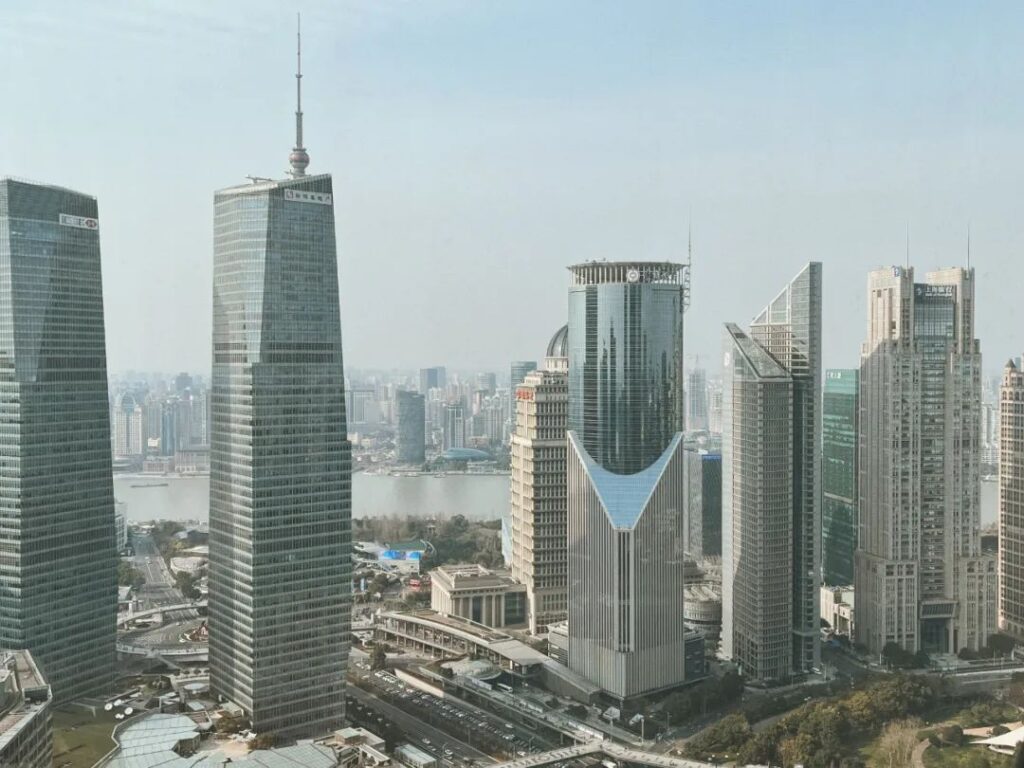
However, what impressed me the most about Guanfu is its exhibition design and attention to detail – it is truly a case of “small yet beautiful.” Just moments ago, I was hesitant about the ticket price, but after entering, I immediately felt that the 100 yuan was well worth it.
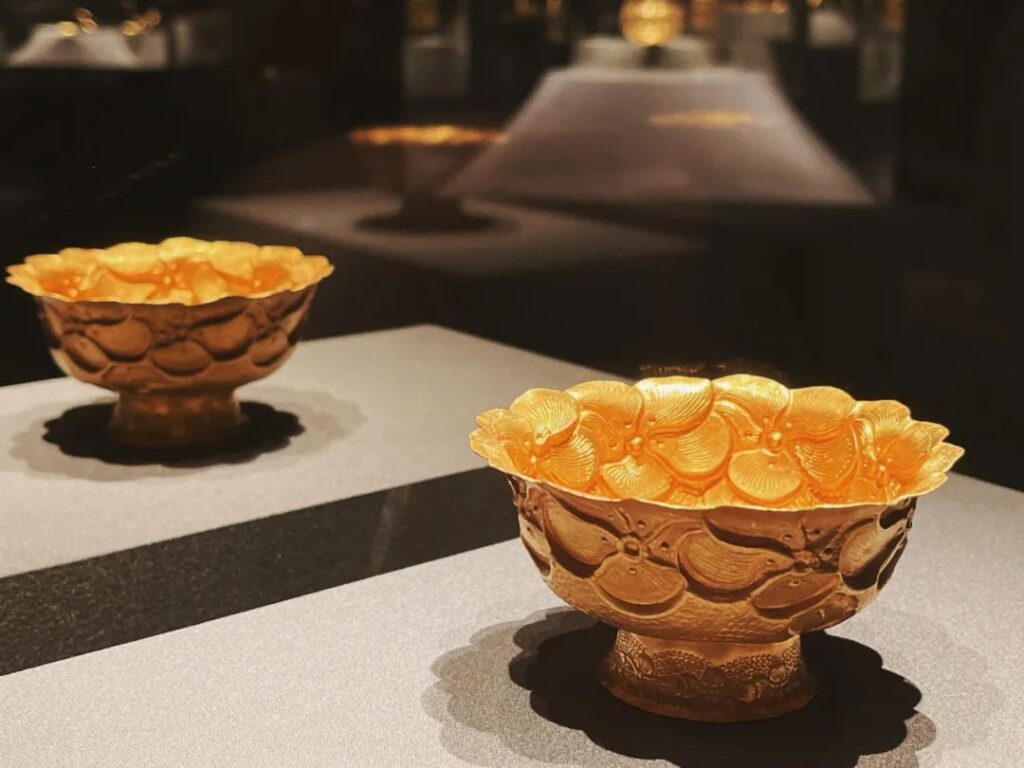
The Guanfu Museum has four themed galleries, each of which left me in awe. The exhibits have a low duplication rate, so missing any one piece would be a loss. I’m not sure of the exact value of these items, but I can completely appreciate their beauty and the superb craftsmanship behind them.
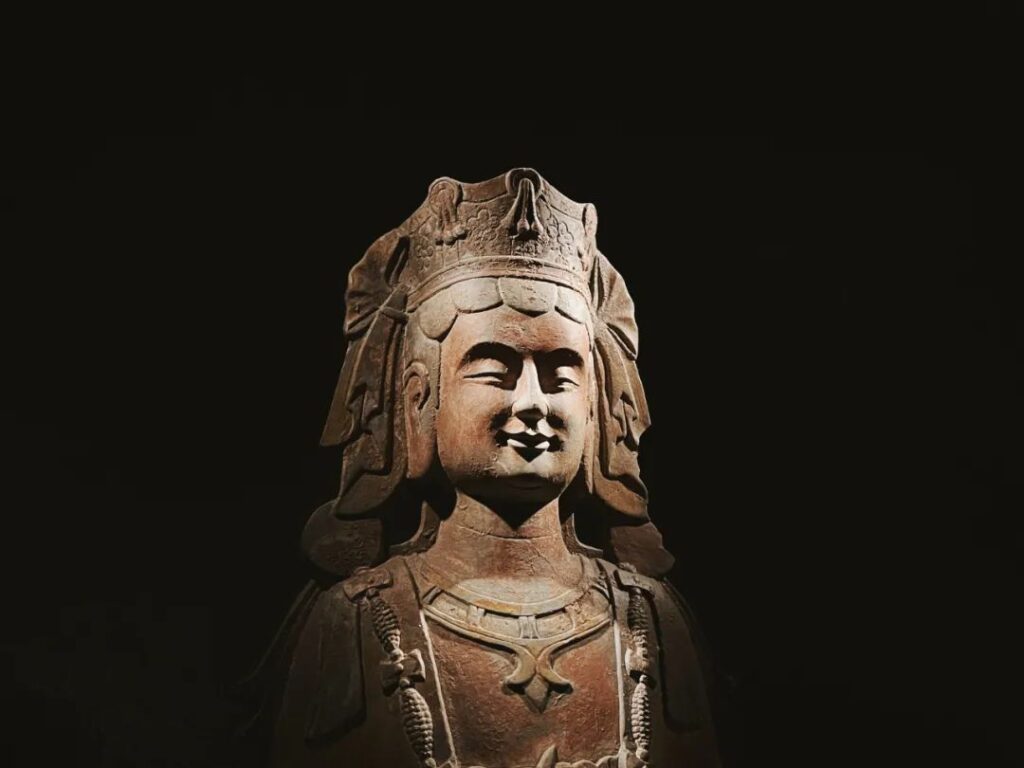
Particularly in the Gold Artifacts Gallery, if you were there in person, you would see the golden glow reflected in my eyes. I must remind everyone that these are all from private collections, so my level of amazement is no less than when I saw the piles of bronze coins and dozens of gold ingots at the Haihunhou Tomb last year.
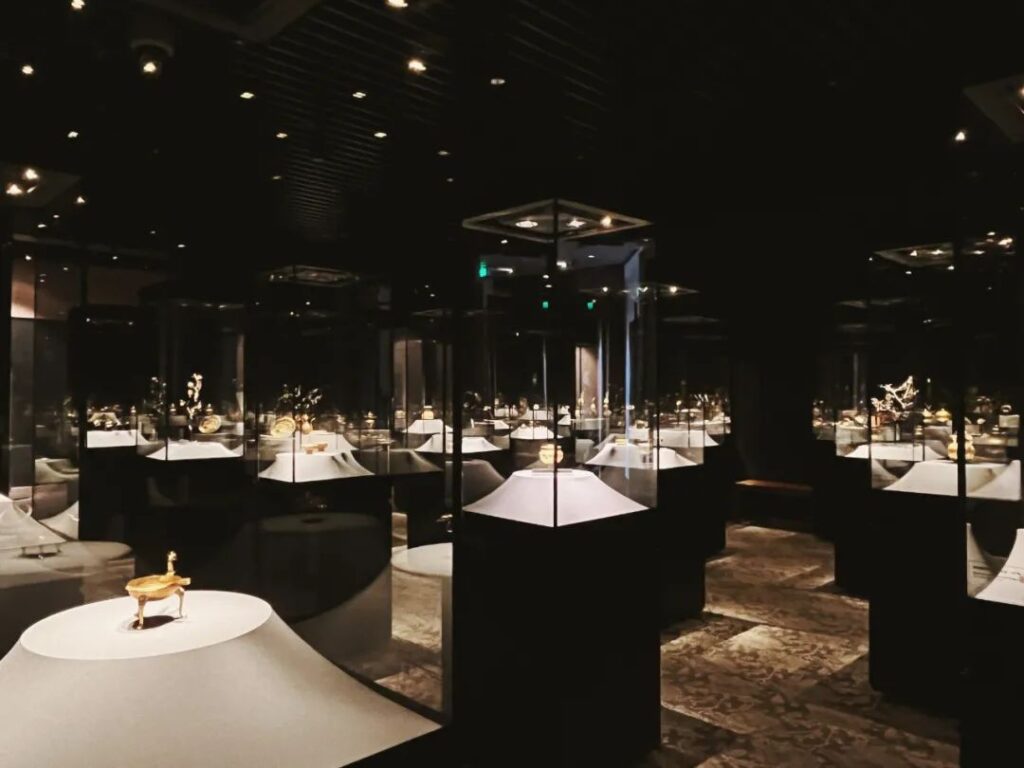
As the museum director Ma Weidu says, “Those who haven’t been here can’t imagine it, and those who have been can’t describe it.” I can attest that he’s completely right.
If you’re interested in experiencing the charm of a private museum, let me tell you about Ma Weidu and his Guanfu Museum. Oh, and I almost forgot – he has a group of adorable feline curators as well.
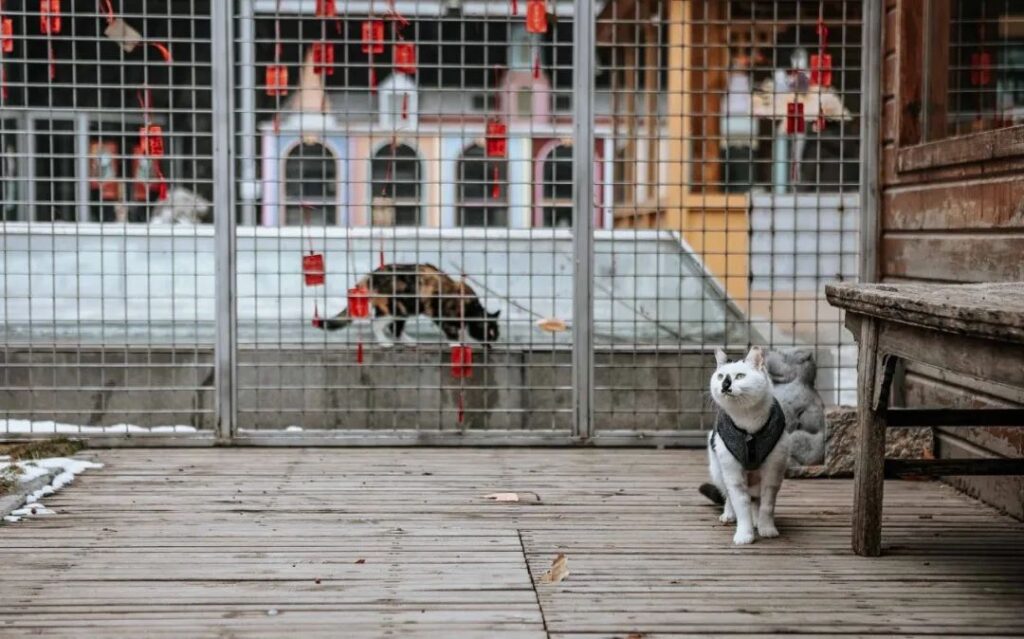
Guanfu / Observing Again and Again
The uniqueness of Guanfu comes from many aspects, first of all its history. Guanfu was first established in Beijing in 1997, making it the first private museum in post-1949 China. Even after more than 20 years when private museums have blossomed across the country, if you were to compile a must-visit list, Guanfu would undoubtedly be at the top, whether in terms of collection quality or diversity.

As the “first mover” in this field, Ma Weidu’s ability to turn Guanfu into an industry benchmark is truly impressive, and a significant part of the museum’s reputation comes from this legendary director.
From being a behind-the-scenes member of the “Editor’s Stories” team to becoming a prominent collector in China, the nearly 70-year-old Ma is now willing to engage with younger audiences through TV shows and social media. I believe Mr. Ma has a sense of mission in promoting traditional Chinese culture.
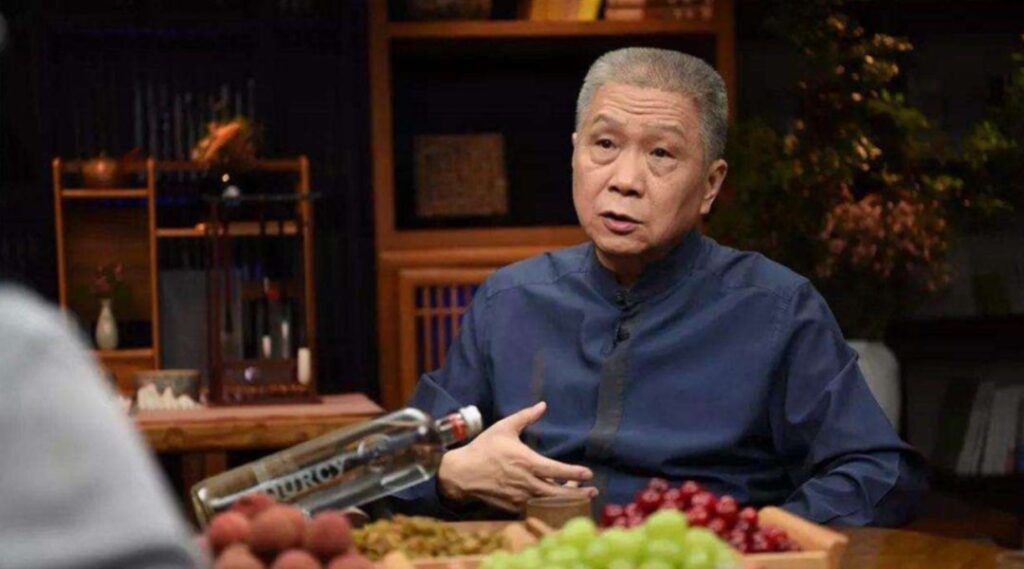
He has even launched two of his own programs – the antique-focused “Guanfu Dududu” and the thought-provoking “Guanfu Qiangqiang,” which I found quite informative. After all, with decades of collecting antiques, he has thoroughly researched the stories behind these artifacts.
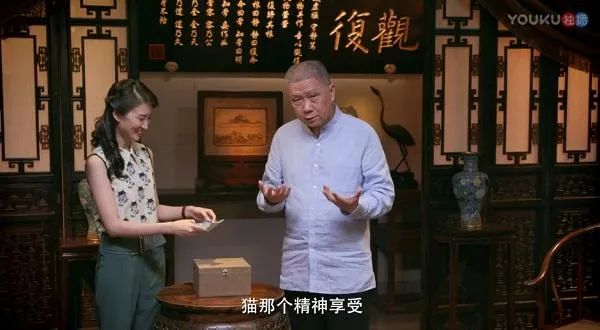
At the end of the day, collecting antiques is a business, but I don’t really sense a “merchant” aura from Mr. Ma.
My First Encounter with Ma Weidu and the Wonders of the Guanfu Museum
I first learned about Ma Weidu through a collaborative video with a photography blogger I follow. His engaging storytelling made the 27-minute video feel like it flew by.

There are also many legends circulating about Mr. Ma, such as how he started frequenting flea markets in the 1980s and found some incredible treasures, or how he would buy low and sell high to make a profit. Some of the anecdotes even come from the man himself, like his early days of collecting antiques at local produce markets. I can’t help but wonder if this is the real-life version of “The Antique Code.”
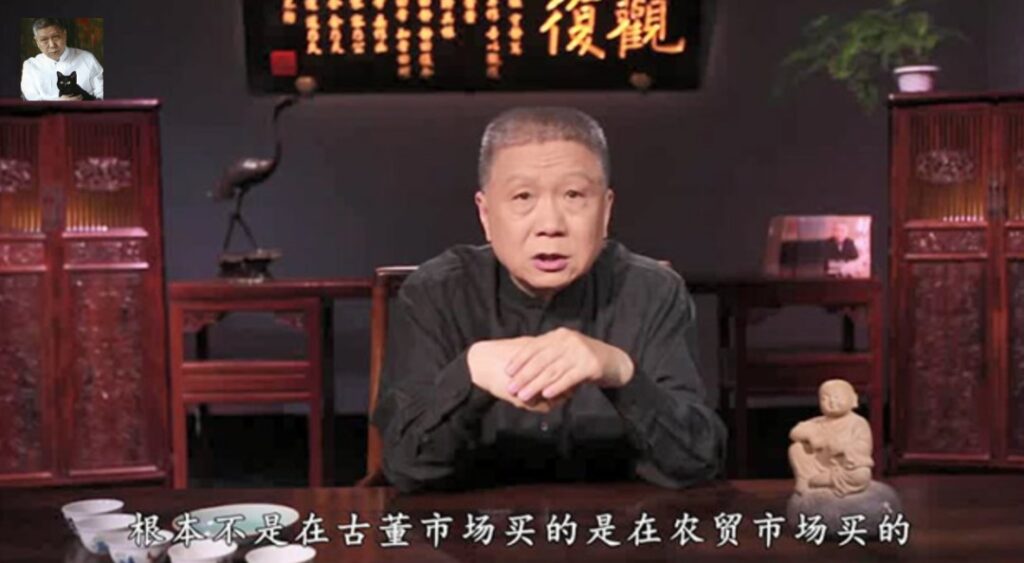
Setting aside these background stories, as an outsider, I can still appreciate the exceptional exhibition standards at the Guanfu Museum. The displays are both aesthetically pleasing and practical, easily rivaling those of state-owned museums.

Since the collections at private museums often come from the general public, they may not have as many palace artifacts as renowned state-owned museums. But this also helps bring the exhibits closer to the visitors.
Additionally, with the museum director Ma being a frequent online personality, Guanfu has become a cultural icon, not just a museum.
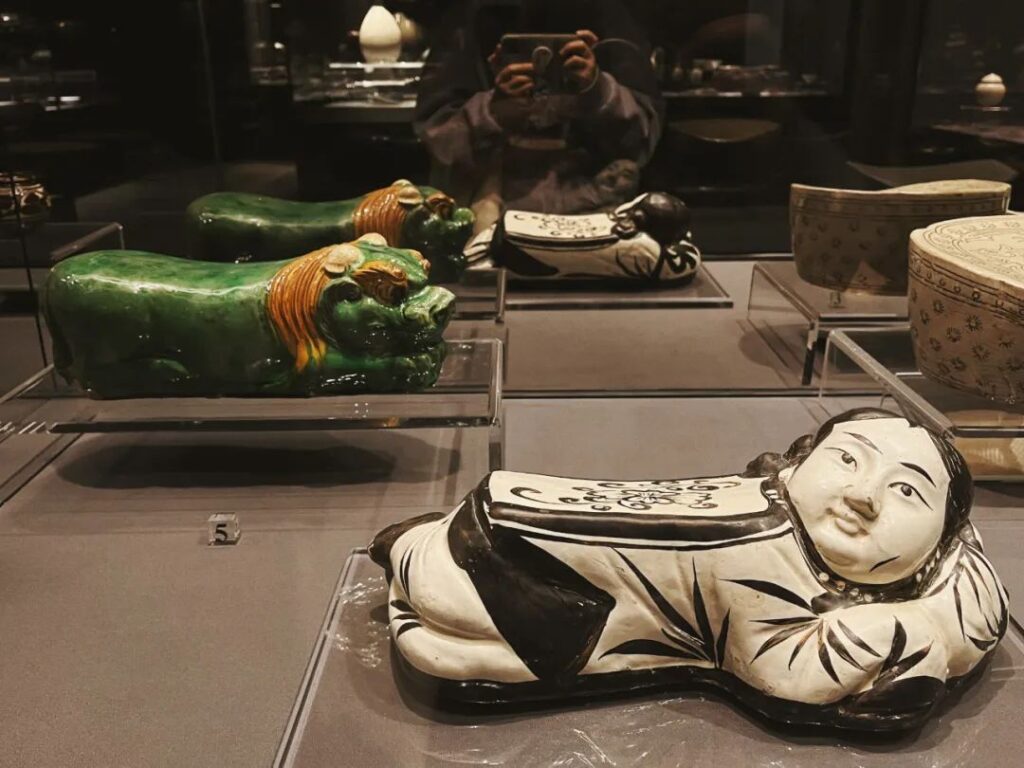
The name “Guanfu” is derived from a quote in the Tao Te Ching: “Attain the utmost emptiness, Hold firmly to the quiet stillness.” My understanding is that one should let their inner self become calm and observe the natural patterns of all things. And in this museum, I truly found myself slowing down to appreciate the exhibits again and again.
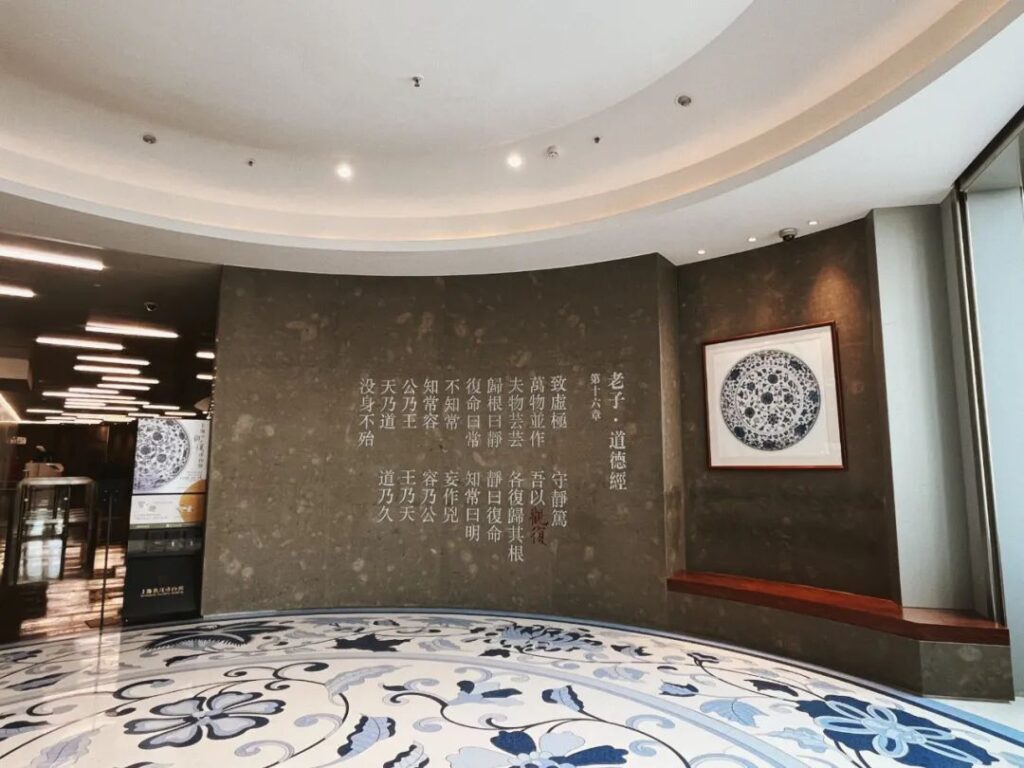
Guanfu / 100 Captivating Exhibits
There is one downside to this visit – photography is not allowed, and the lighting is rather dim, so the photos won’t be able to fully capture the exquisite details of these artifacts. I can assure you that seeing them in person is at least twice as mesmerizing.

The Shanghai Guanfu Museum’s exhibition themes are largely different from the Beijing branch. It has four permanent galleries – Ceramics, East and West, Gold Artifacts, and Sculpture – as well as a special exhibition hall, with a total collection estimated to exceed 400 pieces.
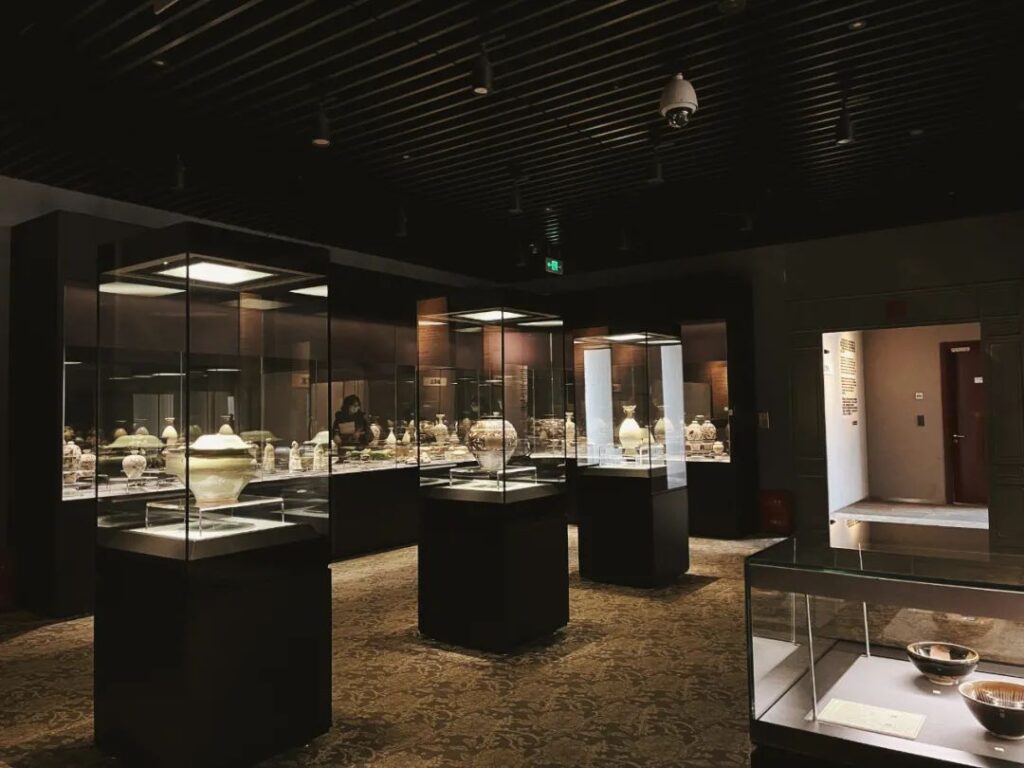
There’s no concept of a “crown jewel” here, as the museum wants each exhibit to receive equal attention. I think this is a great approach – if you find an item that resonates with your aesthetic, that becomes your personal “crown jewel.”
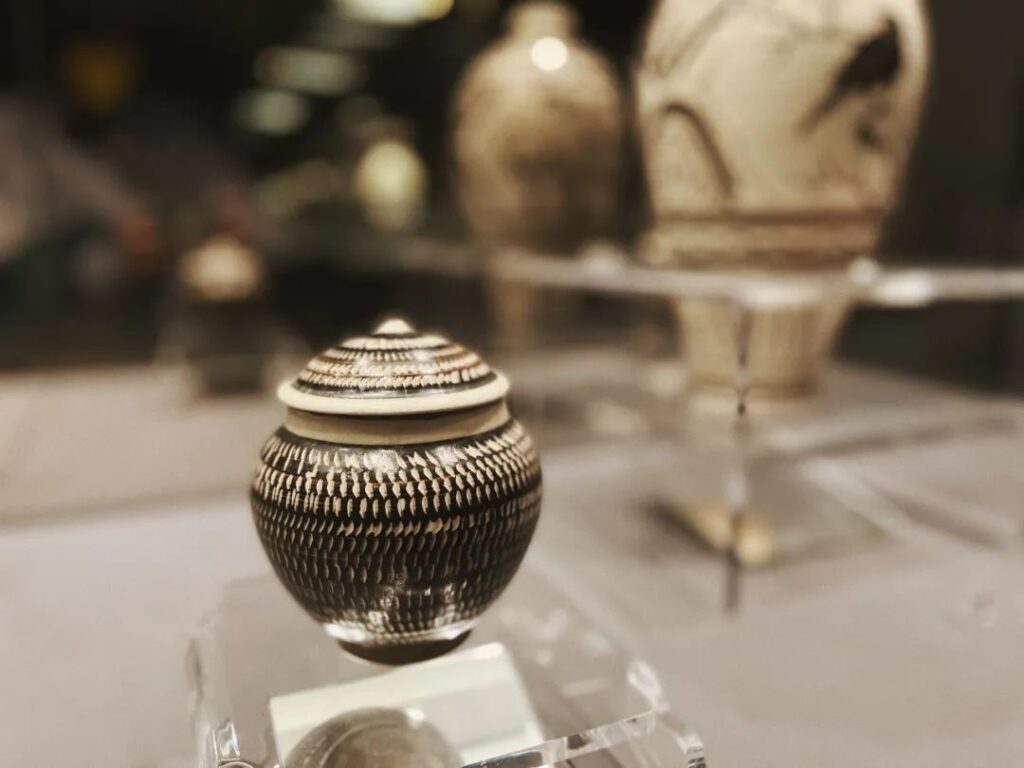
I’ll admit upfront that my favorite piece is the Jizhou ware ceramic with a tortoiseshell pattern. So let’s start our tour from the Ceramics Gallery and discuss how private museums differ from state-owned ones.
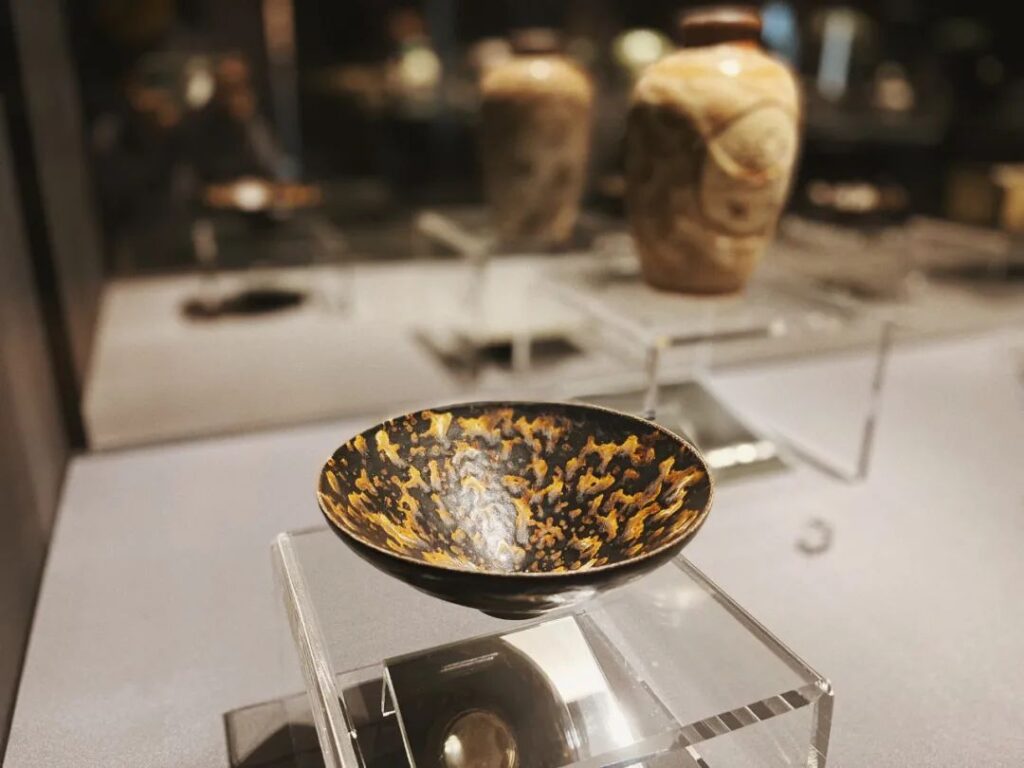
Placing ceramics in the first gallery gives a sense of being welcomed into someone’s home with a delightful cup of tea. The Song dynasty was the golden age of Chinese ceramics, not in terms of quantity, but in artistic aesthetics – the later Ming and Qing dynasties, no matter how hard they tried, couldn’t quite match its refined taste.

A large portion of the ceramics here are from the Song period, with other exhibits ranging from the Five Dynasties to the Jin and Yuan eras, showcasing the artistic styles of each era. Interestingly, the displays are organized by kiln type rather than chronology, making the distinctive features of each kiln more easily discernible.

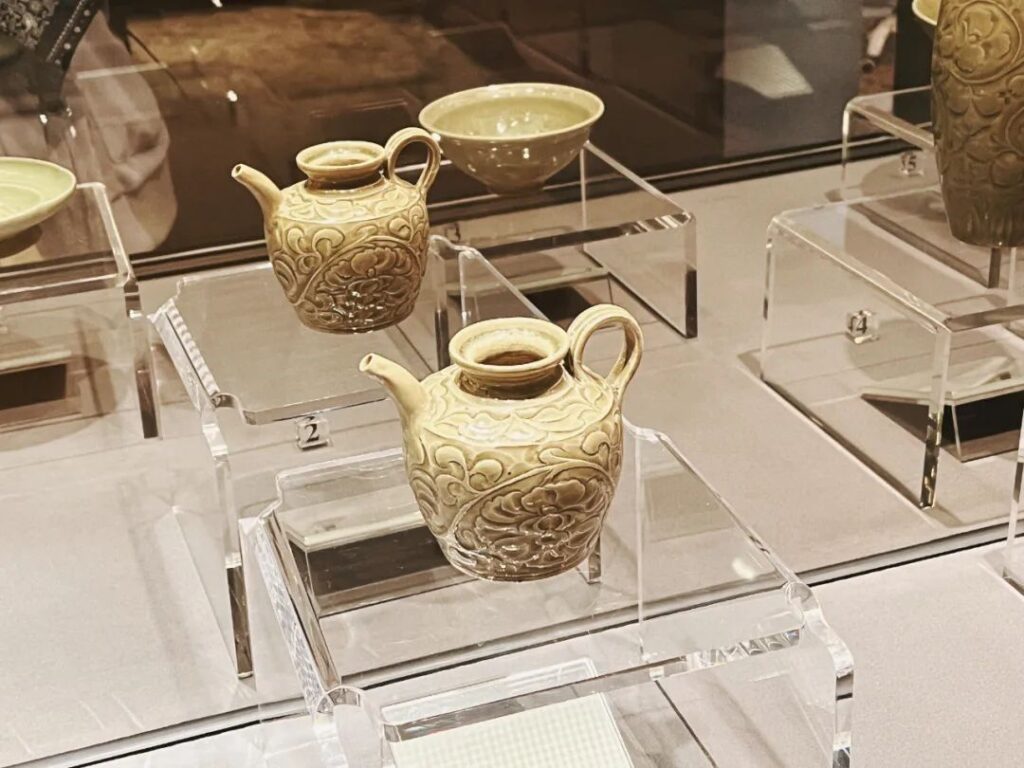
The Jizhou ware has left the deepest impression on me, with its fondness for black and brown glazes and timeless classic patterns.

The carved decorations of Cizhou ware also demonstrate extraordinary craftsmanship, the stark contrast between dark and light tones evoking a mysterious atmosphere.
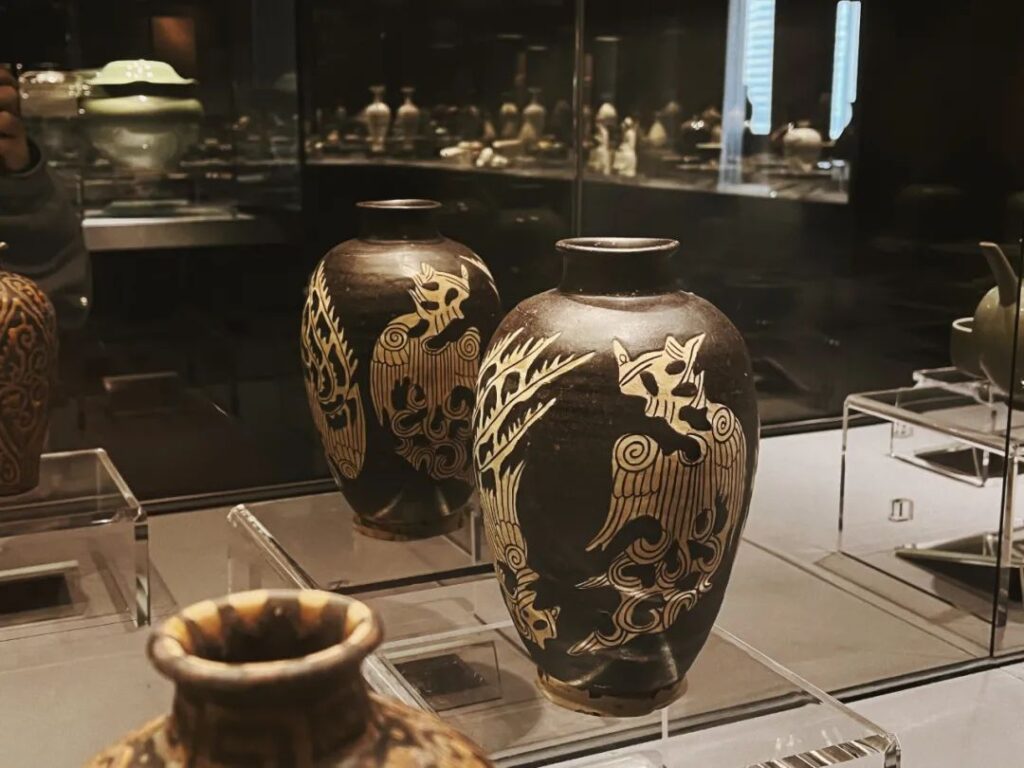
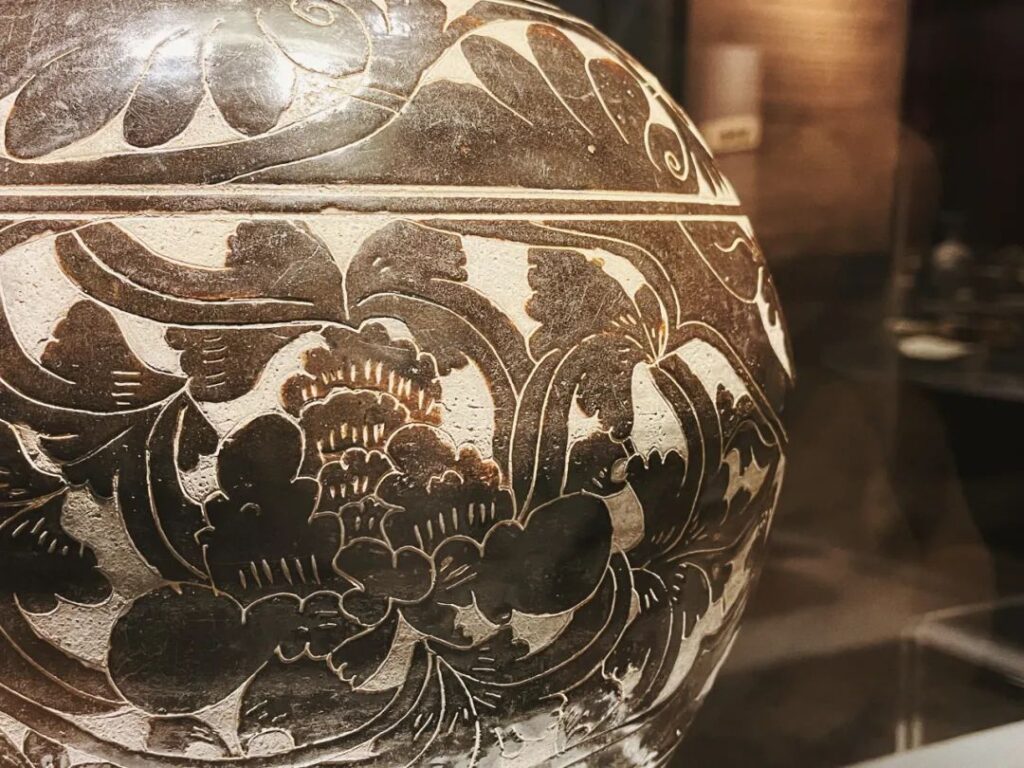
Their white porcelain pieces are quite interesting as well, including the most seasonally appropriate tiger-head pillow in the collection.
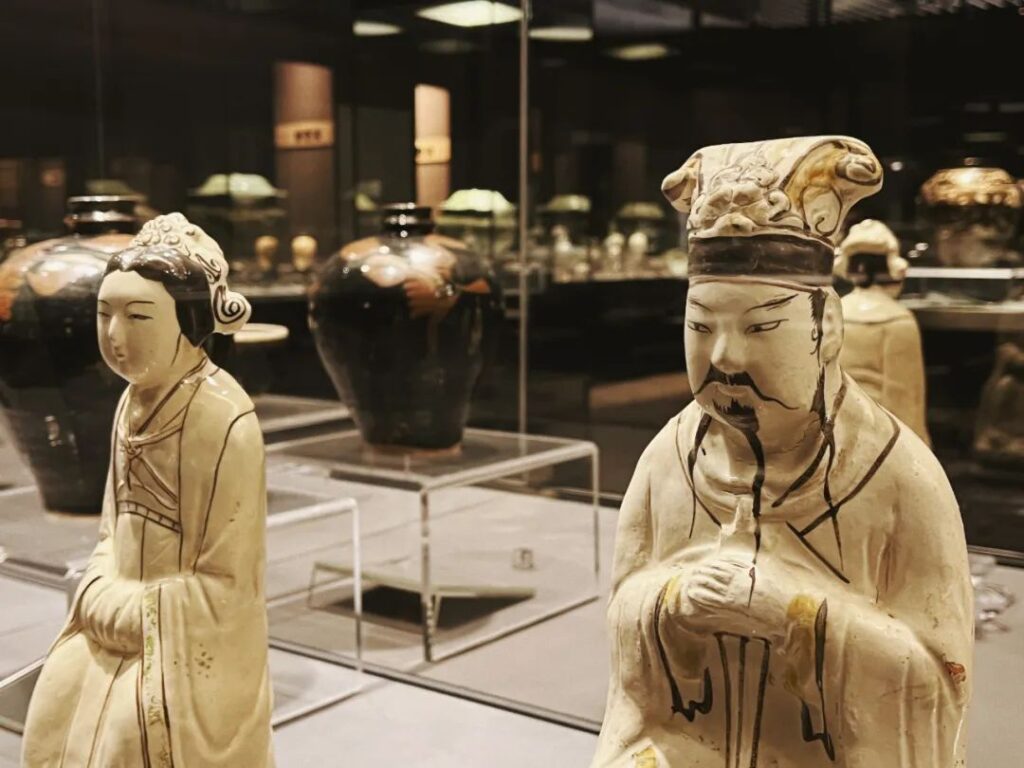
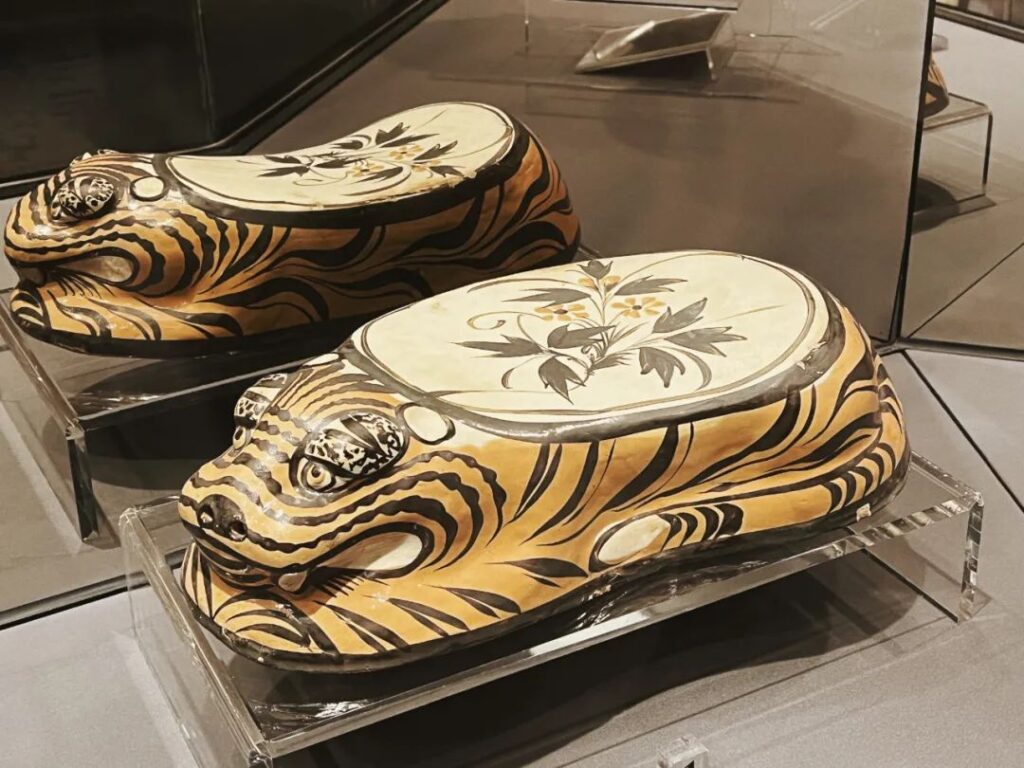
The “staples” of celadon from Longquan, Yue, and Jingdezhen, as well as the white porcelain from Ding kilns, also have a strong presence. Celadon and white porcelain are indeed the most numerous categories in the museum.
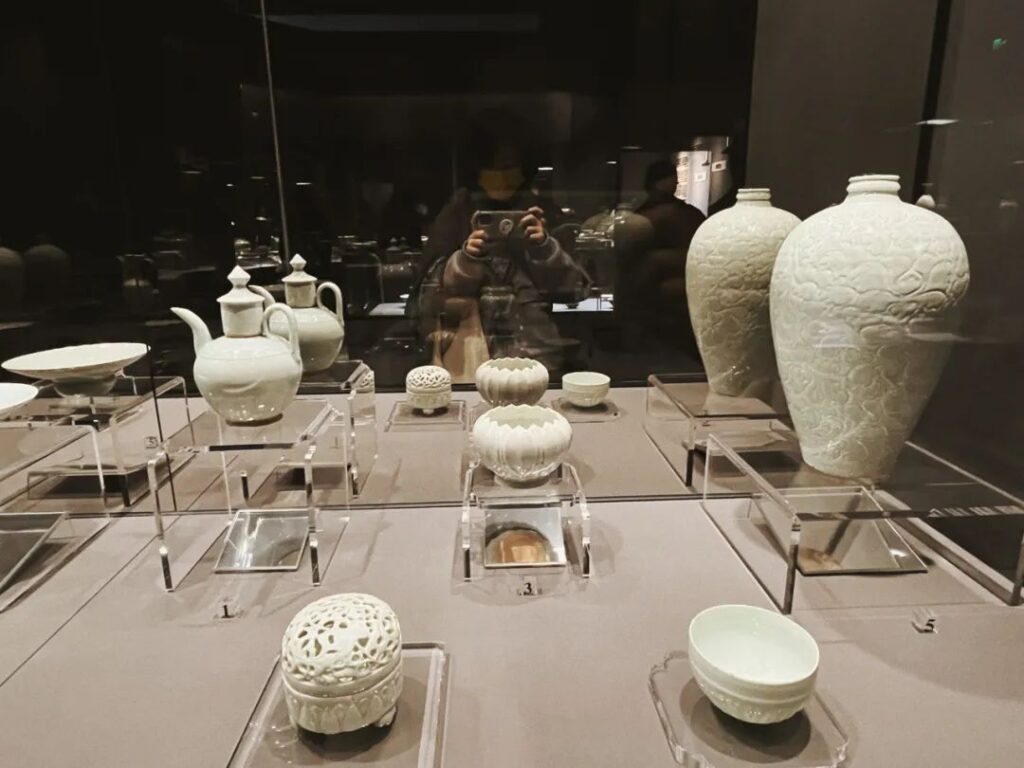
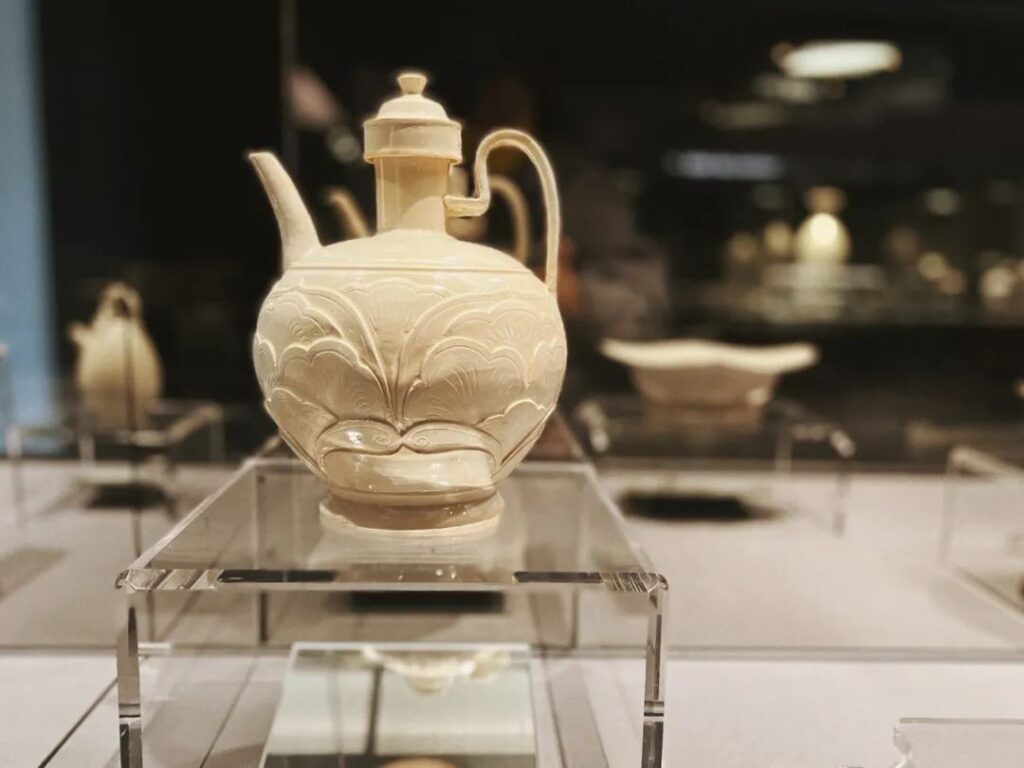
The Most Valuable Ceramics and the Captivating Galleries of the Guanfu Museum
It’s been said that “even if one has a vast personal fortune, a single piece of Junware is more valuable.” The best Junware, from the Northern Song dynasty, is known for its masterful control of the glaze firing process, resulting in beautifully patterned wares. The Junware pieces on display here are from the Jin and Yuan dynasties, showcasing the same firing techniques but not quite reaching the refined aesthetics of the Song originals.
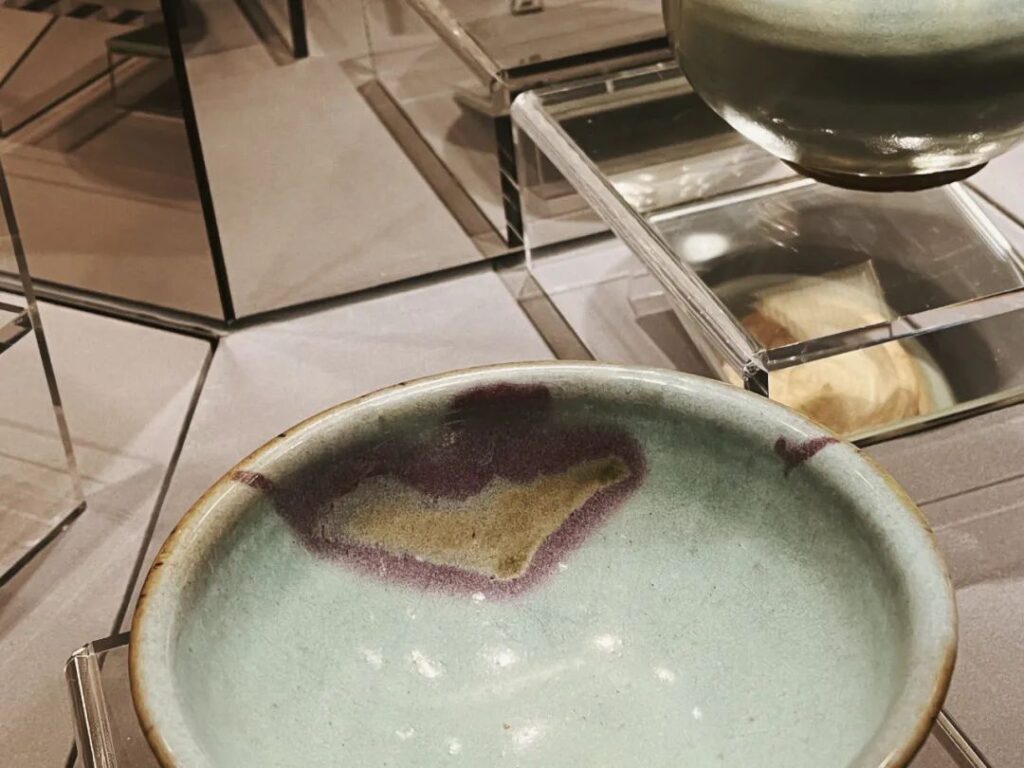
I spent a particularly long time in this first gallery, not just because of the exquisite exhibits, but also due to the thoughtful design – the display cases have mirrors on the back and bottom, allowing visitors to appreciate each piece from a 360-degree view. Such attention to detail is truly heartwarming.

Stepping into the East and West Gallery, the visual style shifts dramatically – from the plain, monochrome ceramics to the vibrant famille rose. It’s clear these are all Qing dynasty pieces, likely from the Kangxi, Yongzheng, or Qianlong eras.
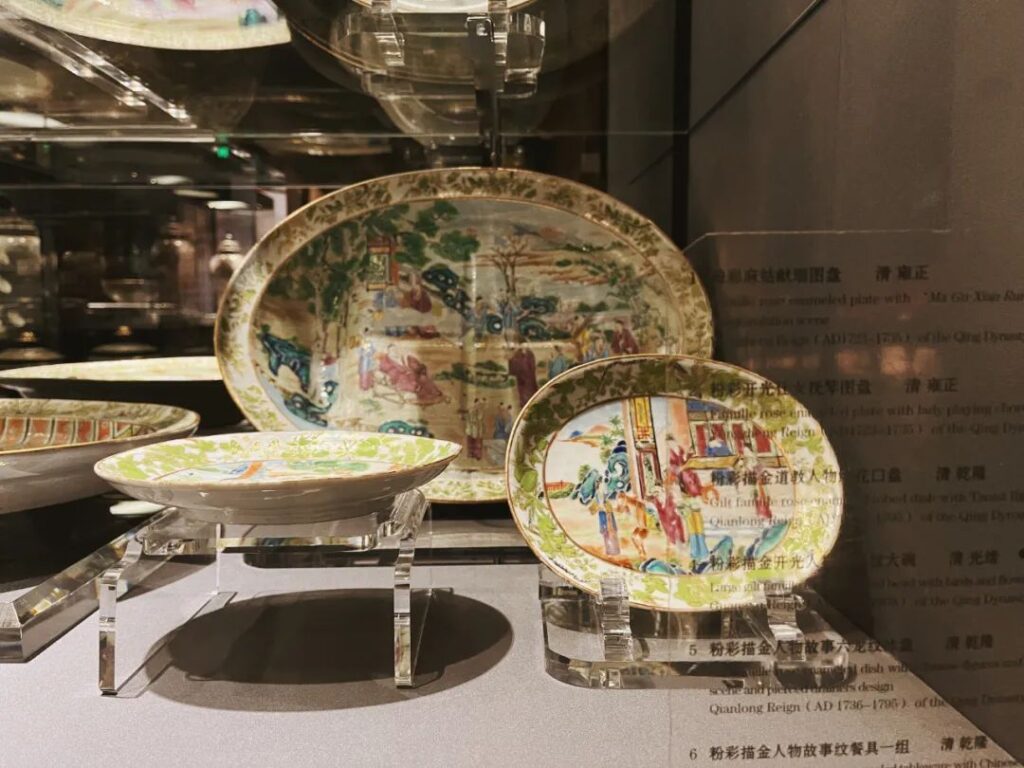
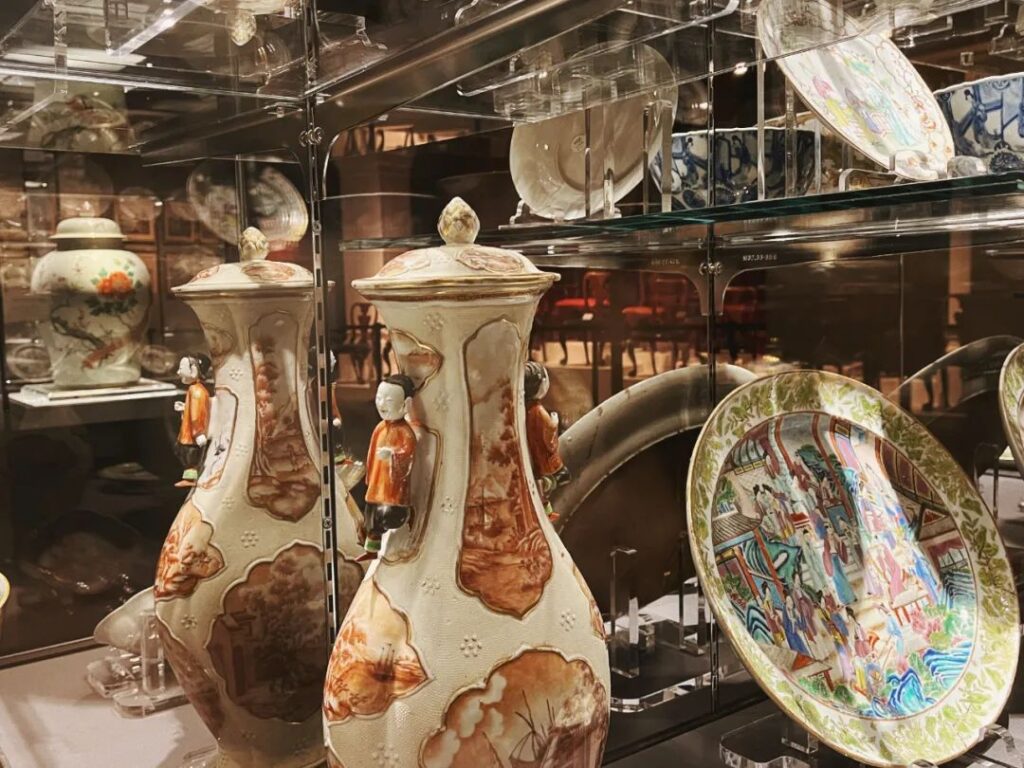
The common thread among the exhibits in this gallery is that they combine Eastern and Western aesthetics. The 18th-century European craze for Chinese style is represented by items like the English-style armchair in huang-hua-li wood, porcelain plates with European figures, and plates decorated with Western motifs.
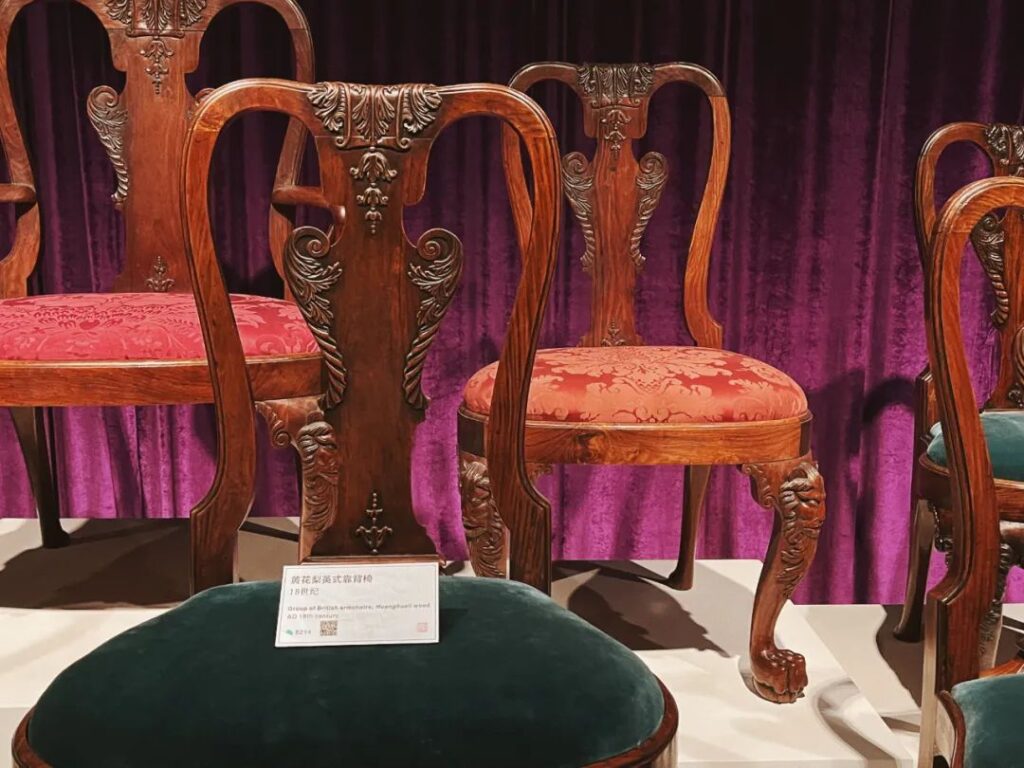
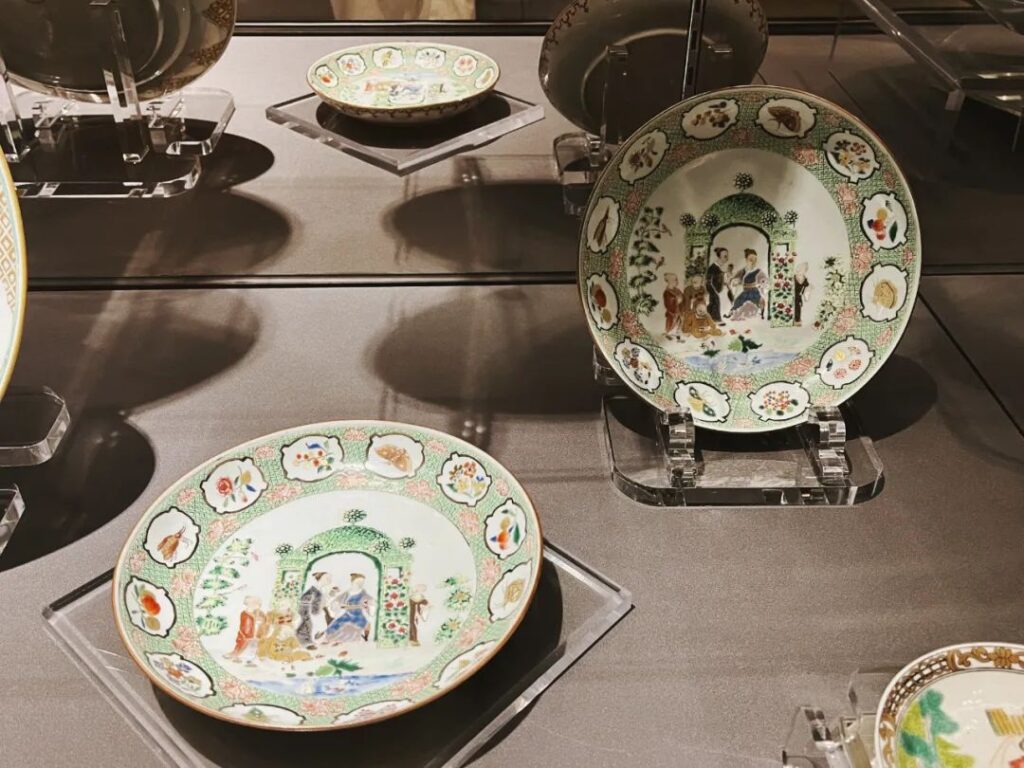


While state-owned museums tend to feature traditional floral designs on their famille rose ceramics, the Guanfu’s pieces showcase more figurative painting themes, which may not match the artistic value of the former but are nonetheless quite intriguing. The painted scenes are like living records of how people lived in the past – what they ate, played, and wore.

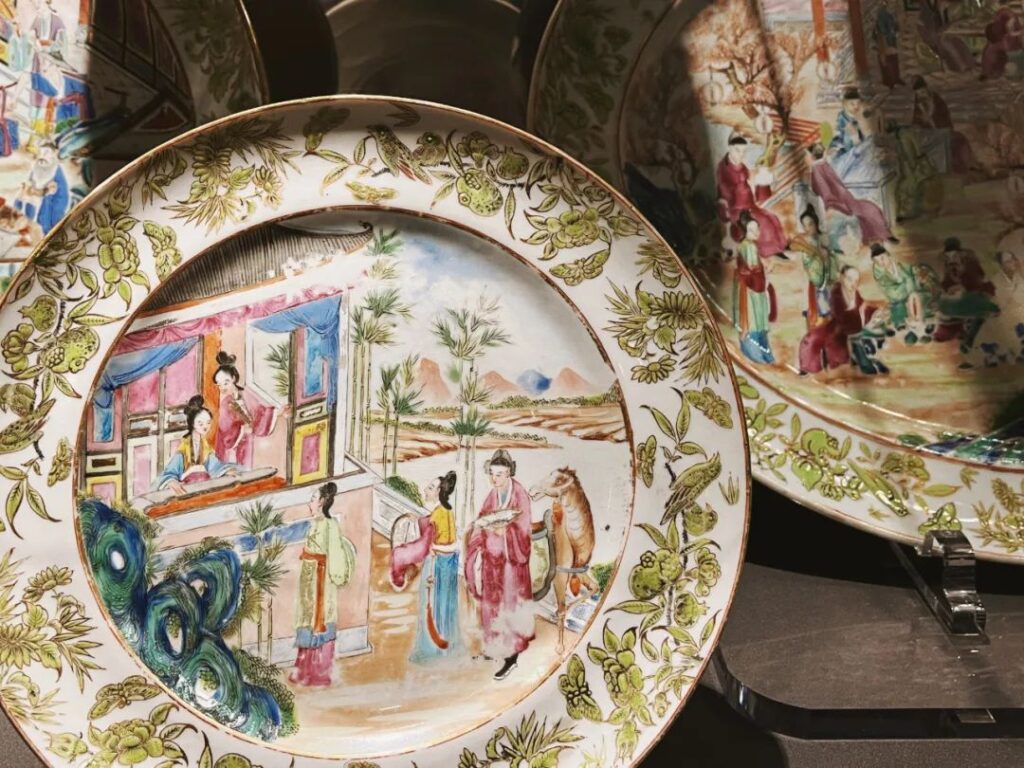
However, I believe the most visually stunning piece in this gallery is the massive Qing dynasty vase covered in grape motifs – the classic combination of red and blue is indeed captivating.

After exiting the East and West Gallery and taking a brief turn, the pièce de résistance awaits – the Gold Artifacts Gallery, housing over a hundred gleaming gold pieces ready to astound every visitor.
This gallery is the easiest to understand, as the inherent value of the objects speaks for itself. The intricate openwork, inlay, and forging techniques are readily apparent to the naked eye.
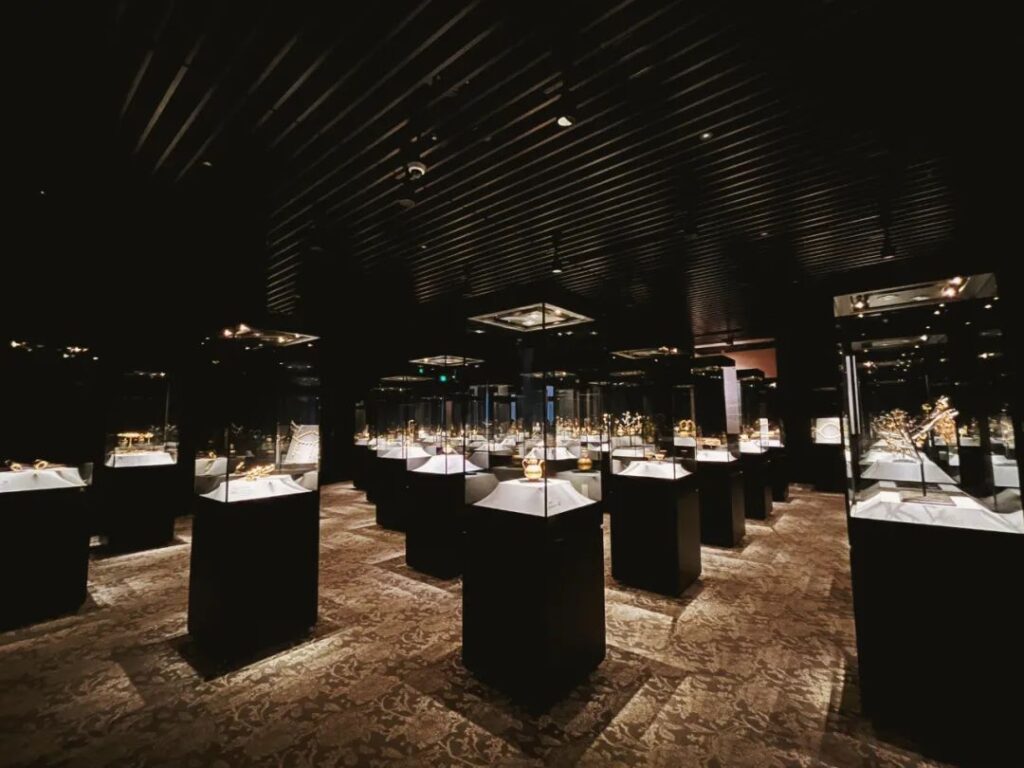
Displaying similar gold accessories together allows one to observe the “trendy styles” of different dynasties. The Five Dynasties pieces are the most austere, whether hairpins or bracelets, with only simple decorations. Fun fact: men also used hairpins back then.
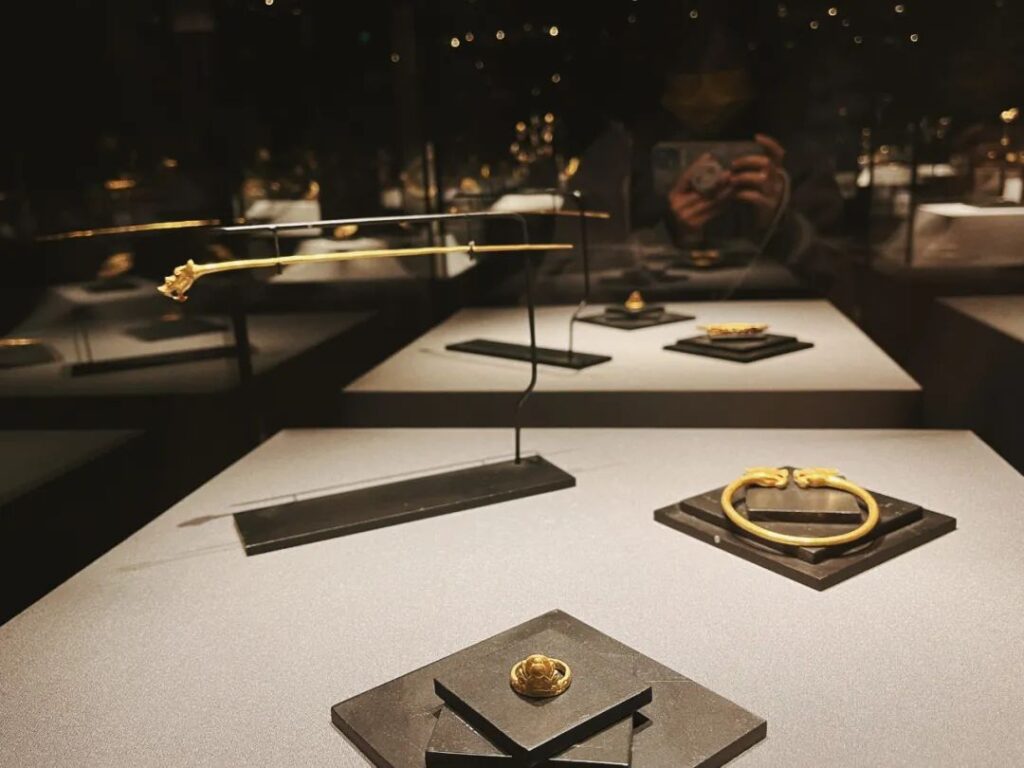
The openwork craftsmanship of the Song dynasty hairpins is remarkably sophisticated, exuding a sense of grandeur. This openwork design not only serves an aesthetic purpose but also had a practical function – heat dissipation. Archaeologists have found that ancient women’s hairstyles were 3-4 times as voluminous as modern ones, so ventilation was crucial.
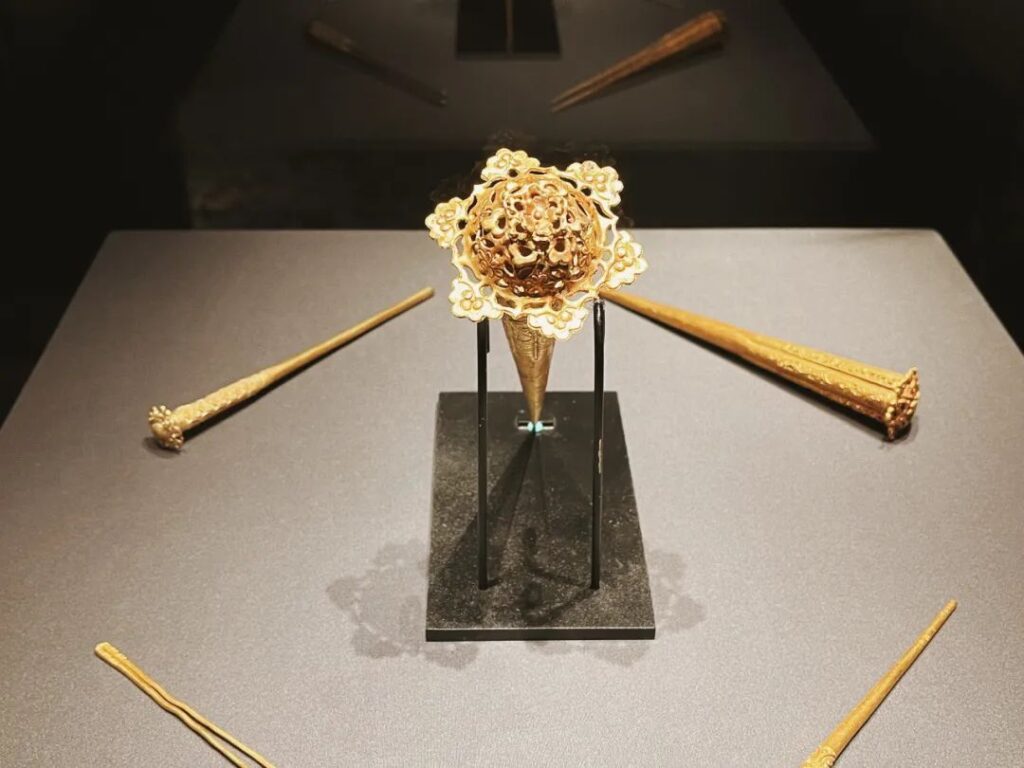
As technology advanced, the Ming dynasty hairpins and step-shaped ornaments with embedded gems became even more eye-catching, with increasingly complex designs.
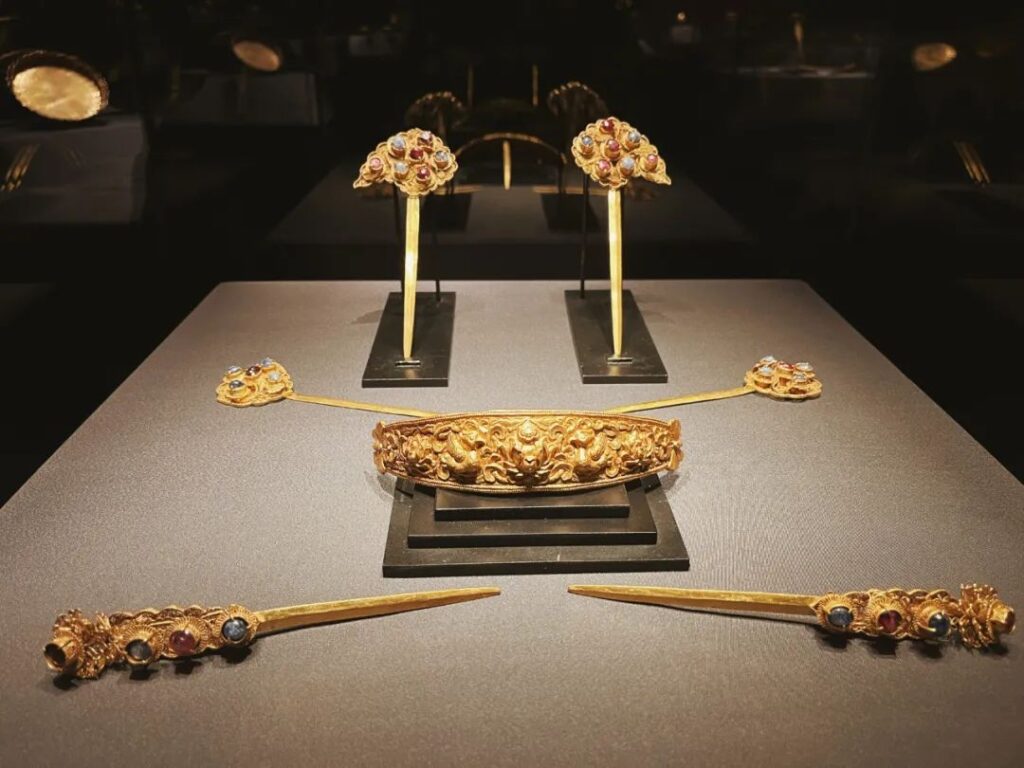

This “ornate beauty” reached its pinnacle in the Qing dynasty. Thanks to the strategically placed mirrors, every exhibit’s backside is also clearly visible – a privilege I haven’t encountered in other museum visits, and a testament to the attention to detail at Guanfu.
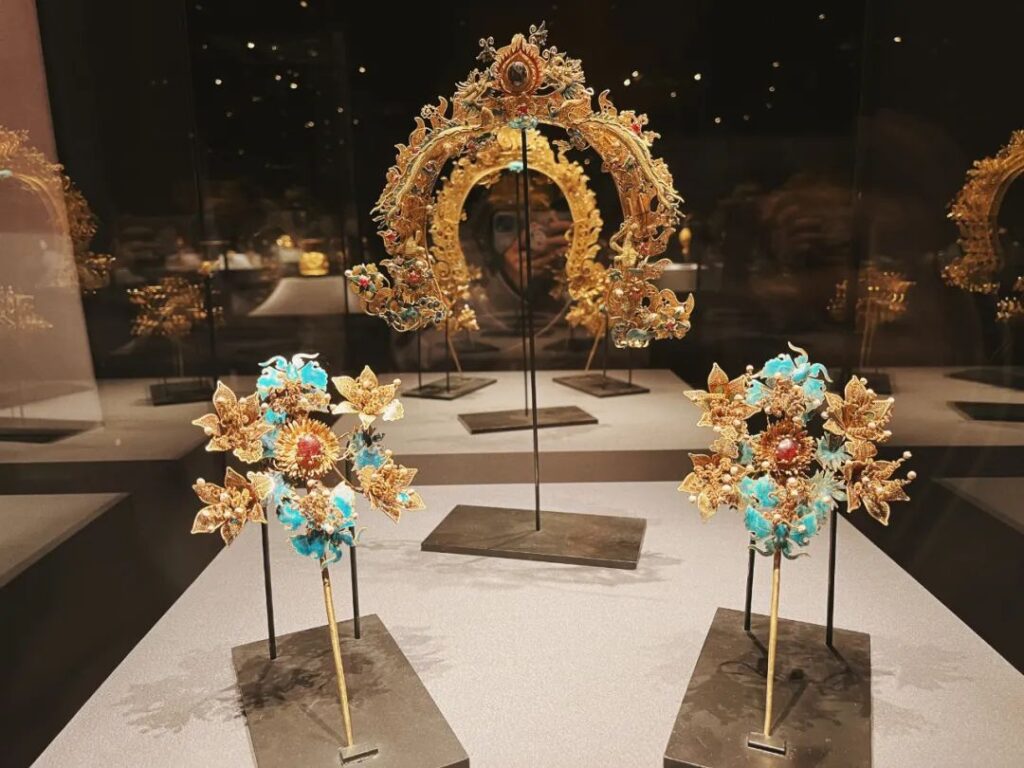
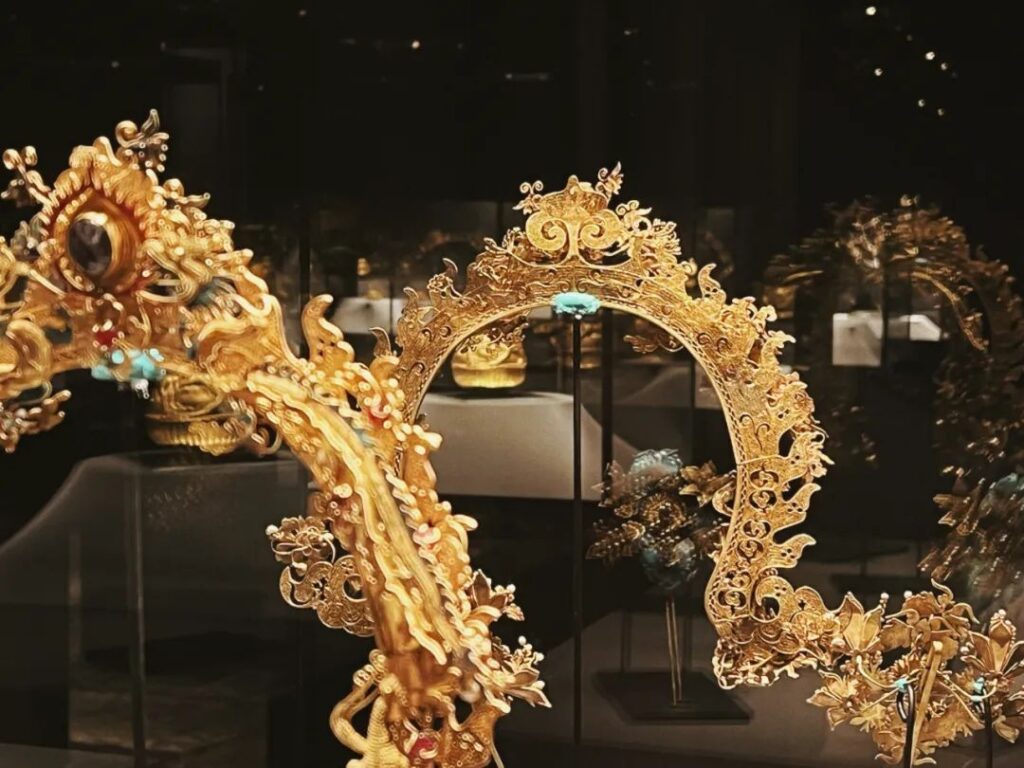
The evolution from simple to intricate can also be seen in the three sets of earrings from different dynasties. The display curation is truly commendable, as the museum excels at showcasing the beauty of these ancient artifacts.
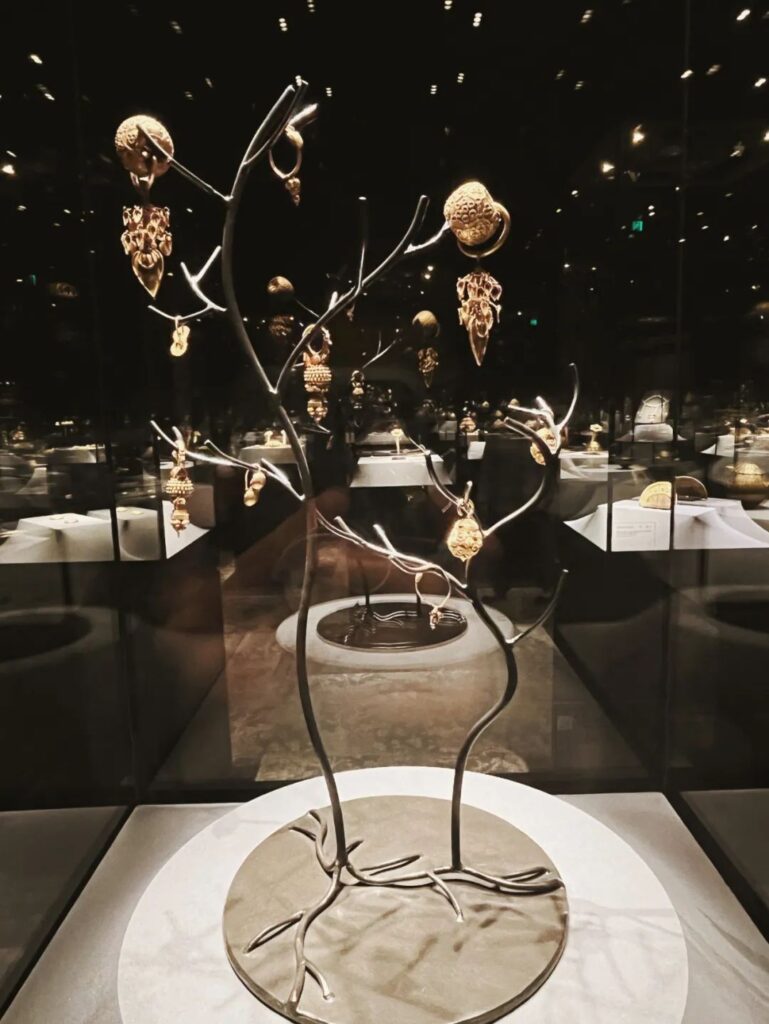
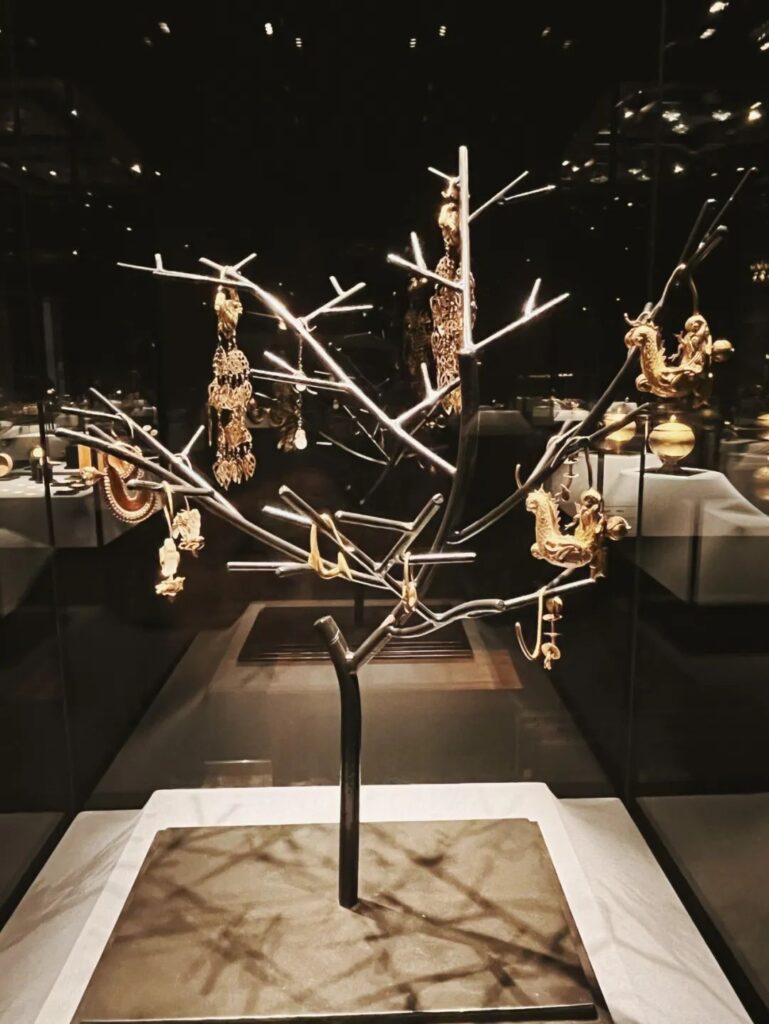

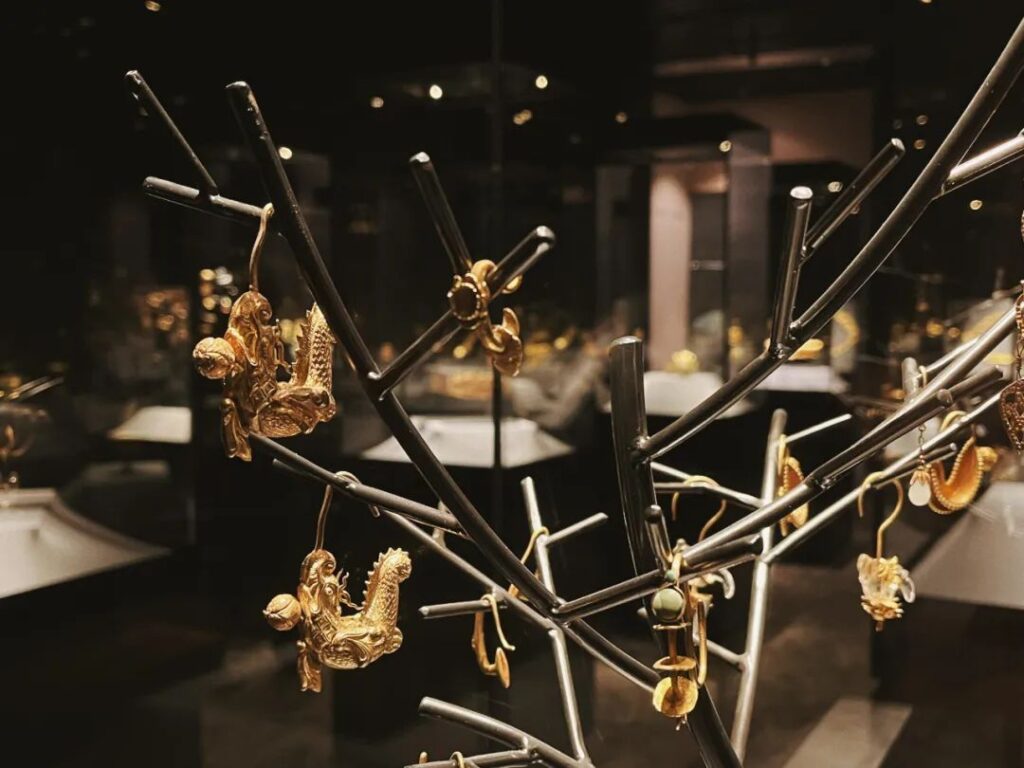
Another item that makes me appreciate the sophistication of ancient craftsmanship is the now-forgotten arm bracelet. Before the Ming dynasty, women would wear these on their upper arms when donning sleeveless or short-sleeved garments in the summer. Comparing the styles of the steppe nomads (Liao dynasty) and the Central Plains (Song dynasty), one can sense the cultural differences.
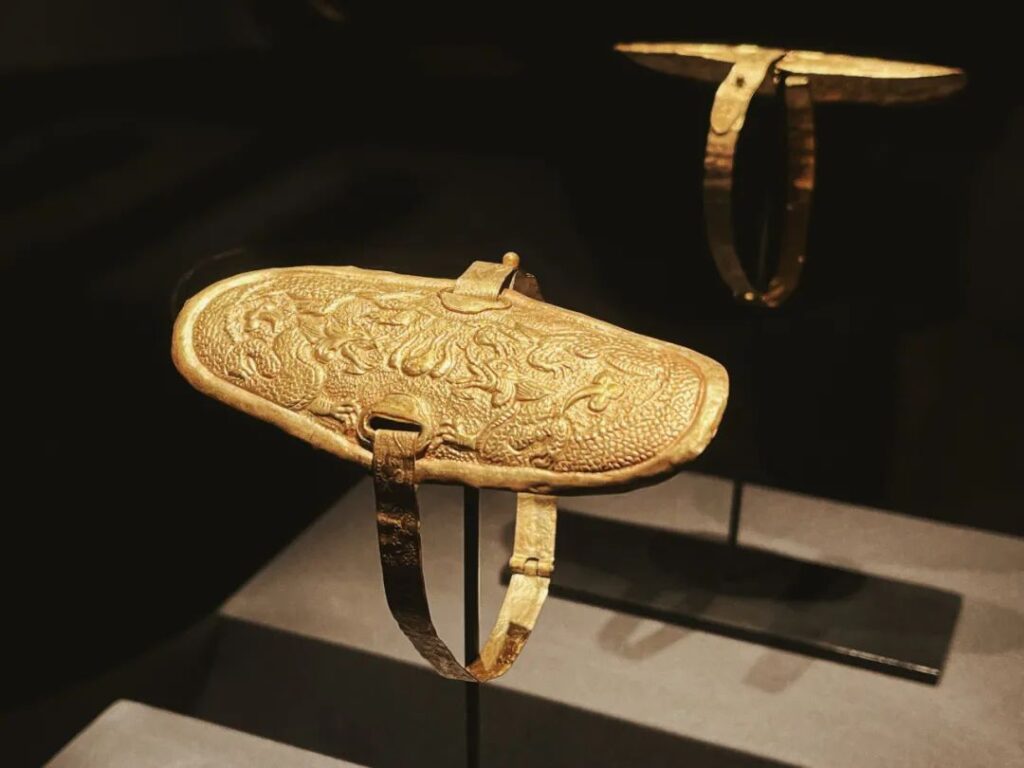

Totemic animals like eagles and tigers, popular in the Warring States and Western Han periods respectively, can also be glimpsed in the exhibits.
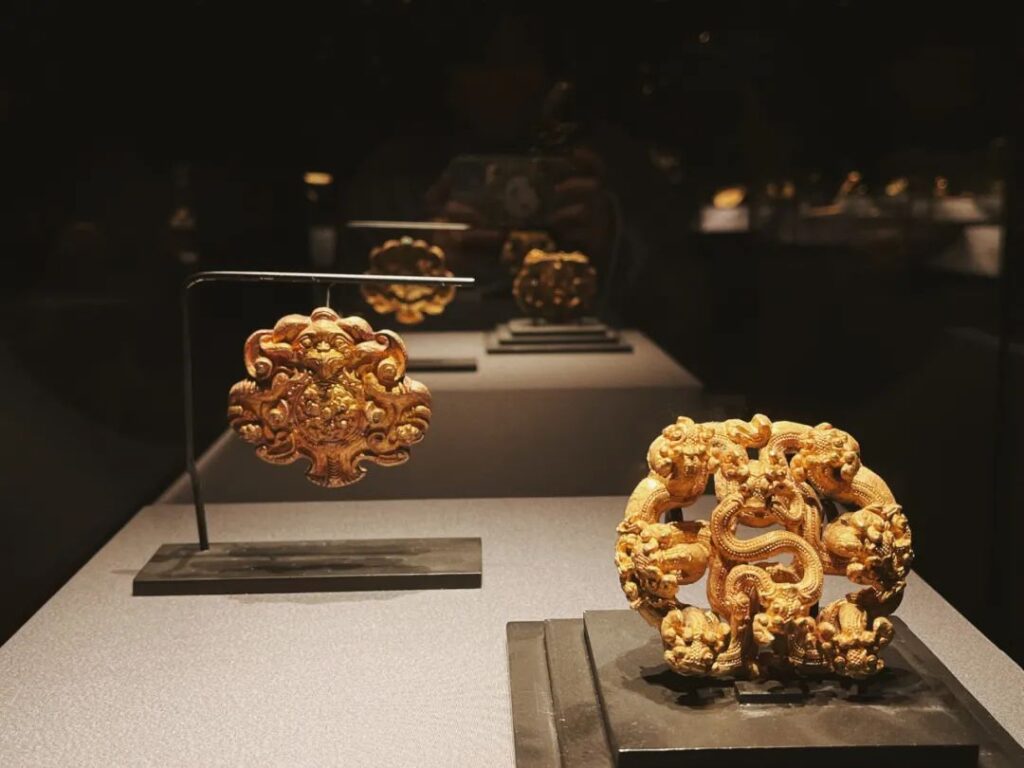
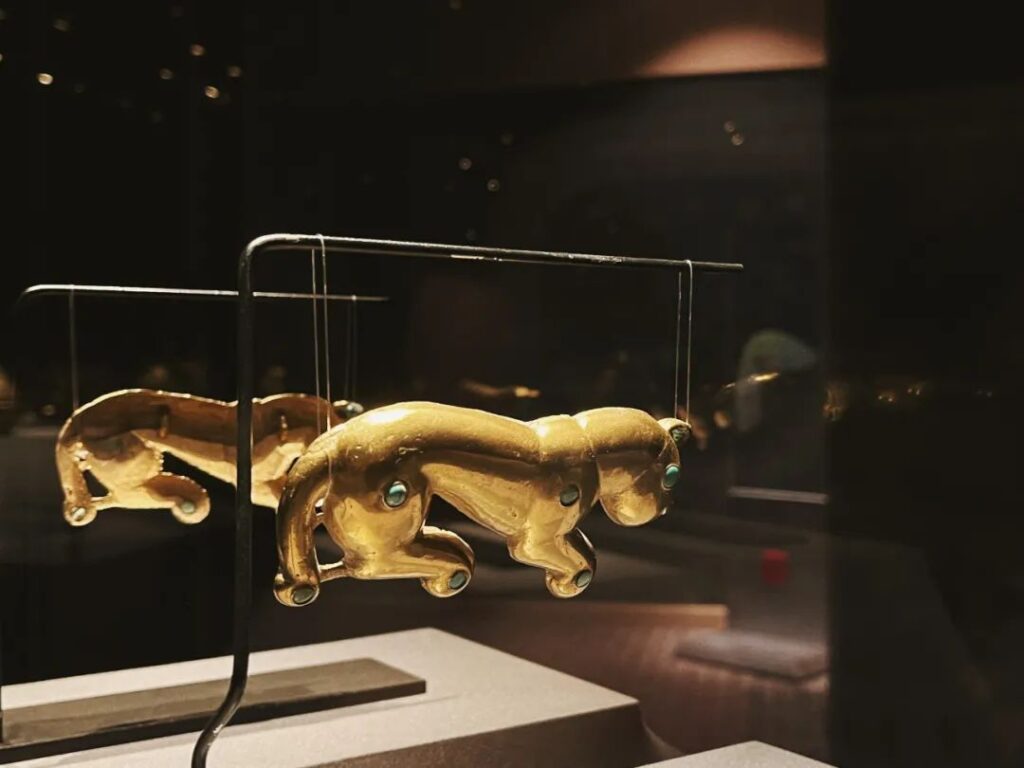
Ultimately, even without delving into the backstories, simply basking in the splendor of these hundred-plus gold treasures is a true feast for the eyes.

As I ventured further into the museum, my mind was already anticipating the final Sculpture Gallery, even as my eyes were captivated by the earlier exhibits. If parachuted here without prior knowledge, one would never guess that this grand space is housed within a high-rise.
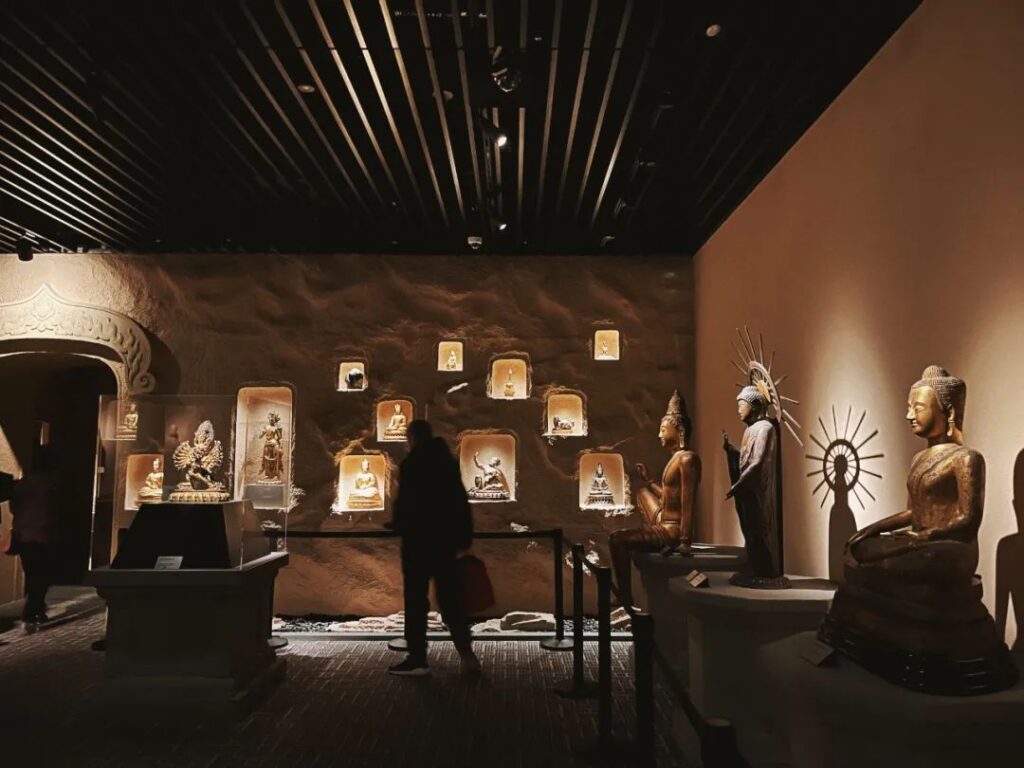
The walls are designed to mimic the aesthetics of rock-cut cave temples, with specially laid flooring that heightens the sense of being in a sacred space. The majority of the sculptures are in gilt bronze, and seeing these Buddhist statues up close is truly a revelation – their expressions are so lifelike that it’s easy to imagine them suddenly coming to life.
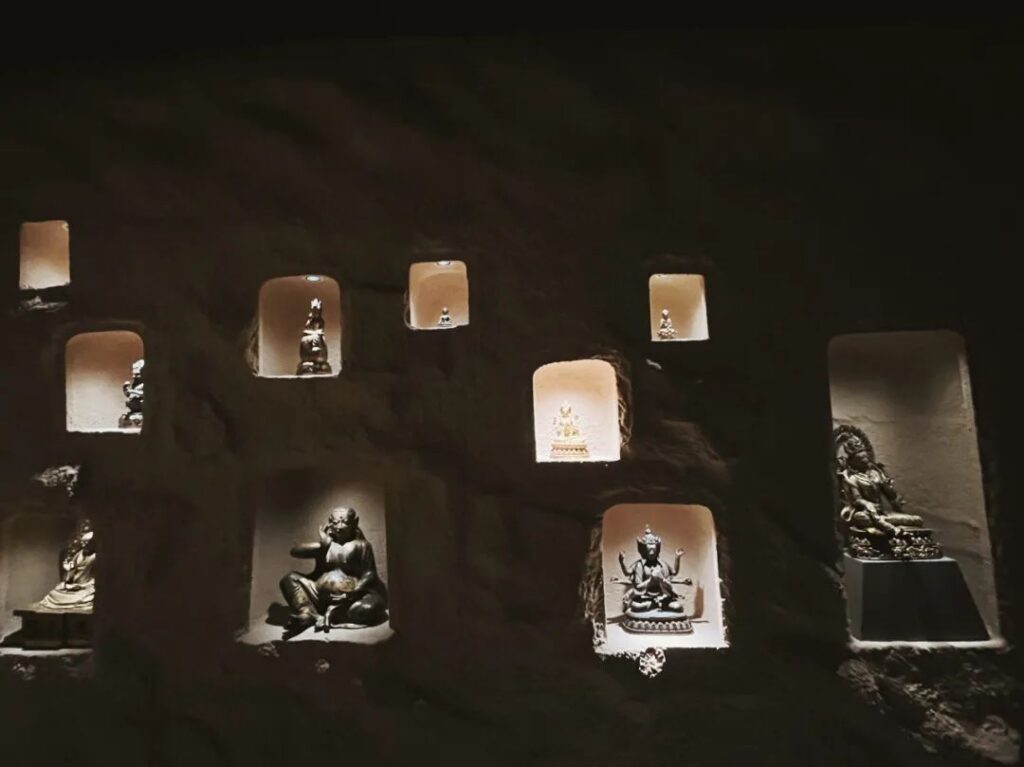

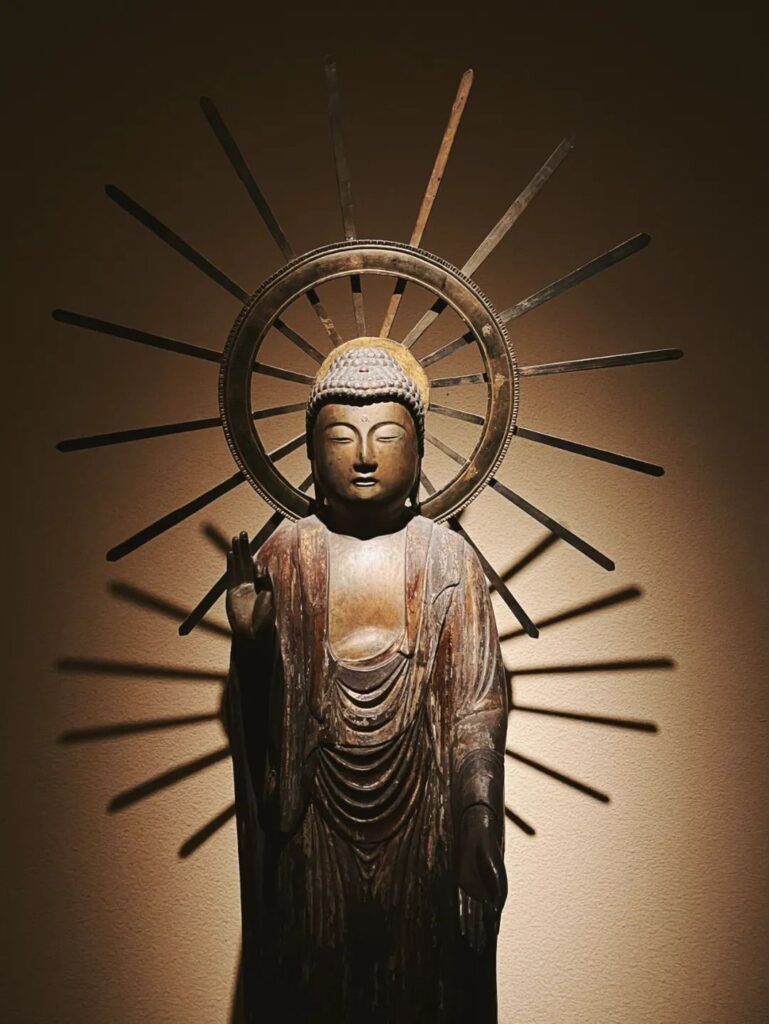
I suspect the Amitabha Buddha from the Ming dynasty is the most prestigious piece, considering it even has its own custom postage stamp.
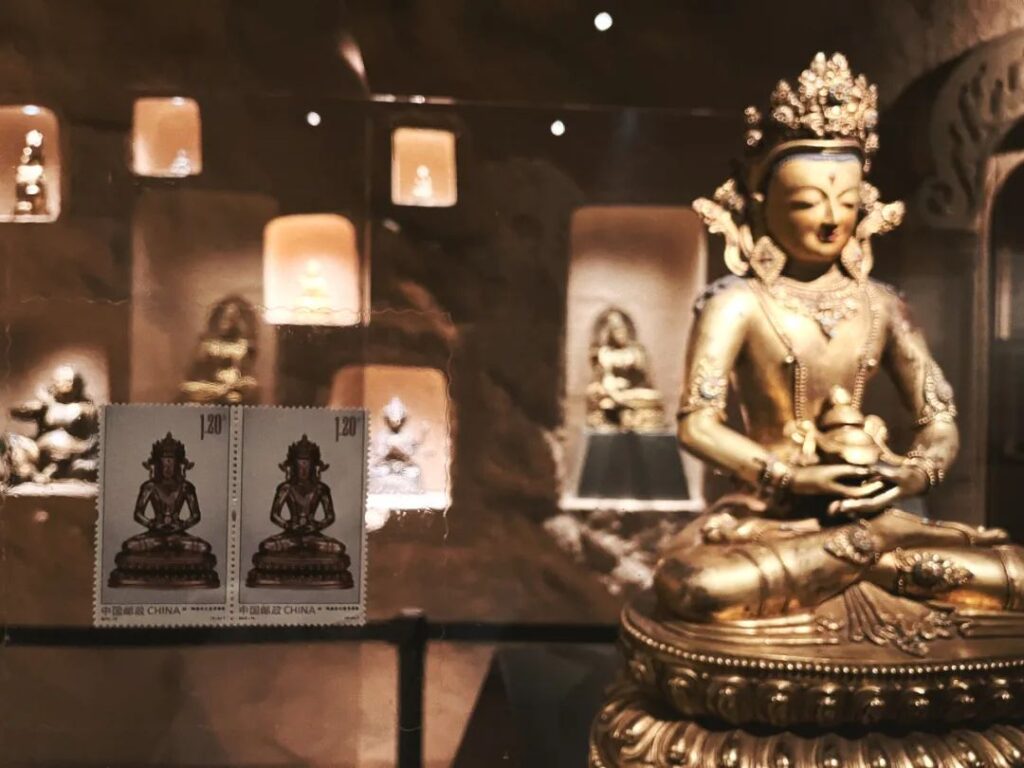
The neighboring Vajrapani Bodhisattva from the same era exudes an awe-inspiring presence, befitting its title as the “Conqueror of Death.” In researching this statue, I came across an astounding piece of information – a Ming dynasty Vajrapani sold at auction in Germany last year for 107 million RMB (I had to recount the zeros a few times).

The stone Buddhist carvings primarily date back to the Northern and Southern Dynasties, a period of great Buddhist devotion. Spotting a Buddha head in the corner, I couldn’t resist taking a closer look at the broken neck – definitely something straight out of “The Antique Detective.”
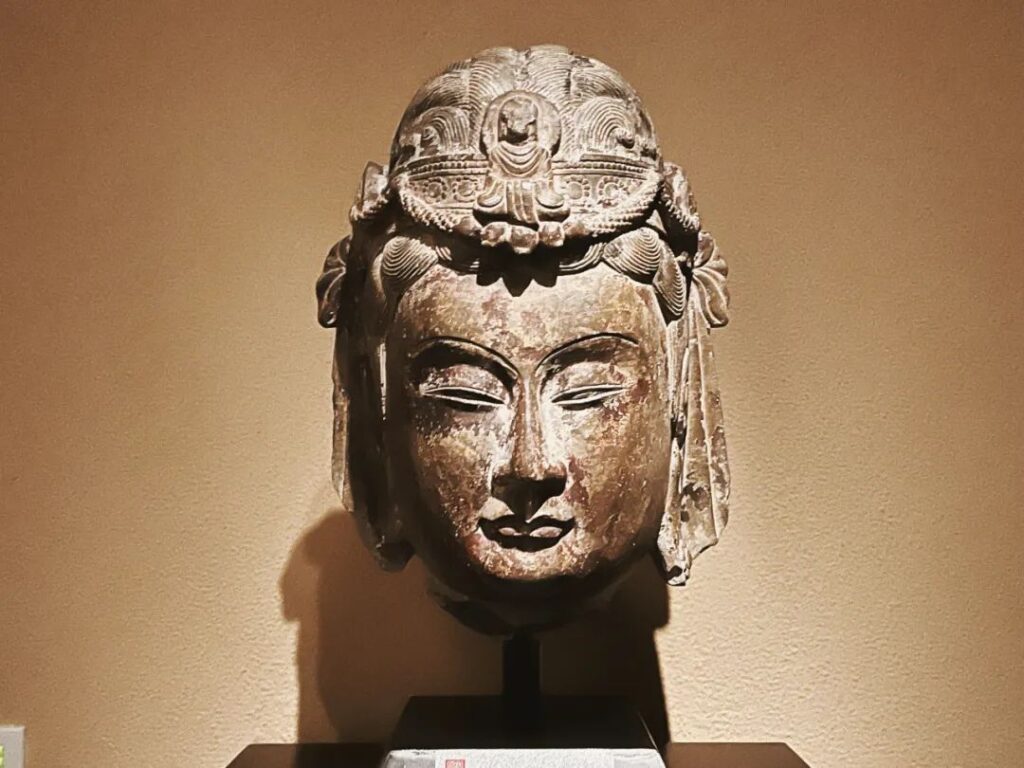
Painted Buddhist statues often lose their pigments over time due to prolonged exposure to light, which is why the Mogao Grottoes have been kept in darkness. But here, the colors have already faded considerably by the time the pieces were acquired, with only faint traces visible upon close inspection.
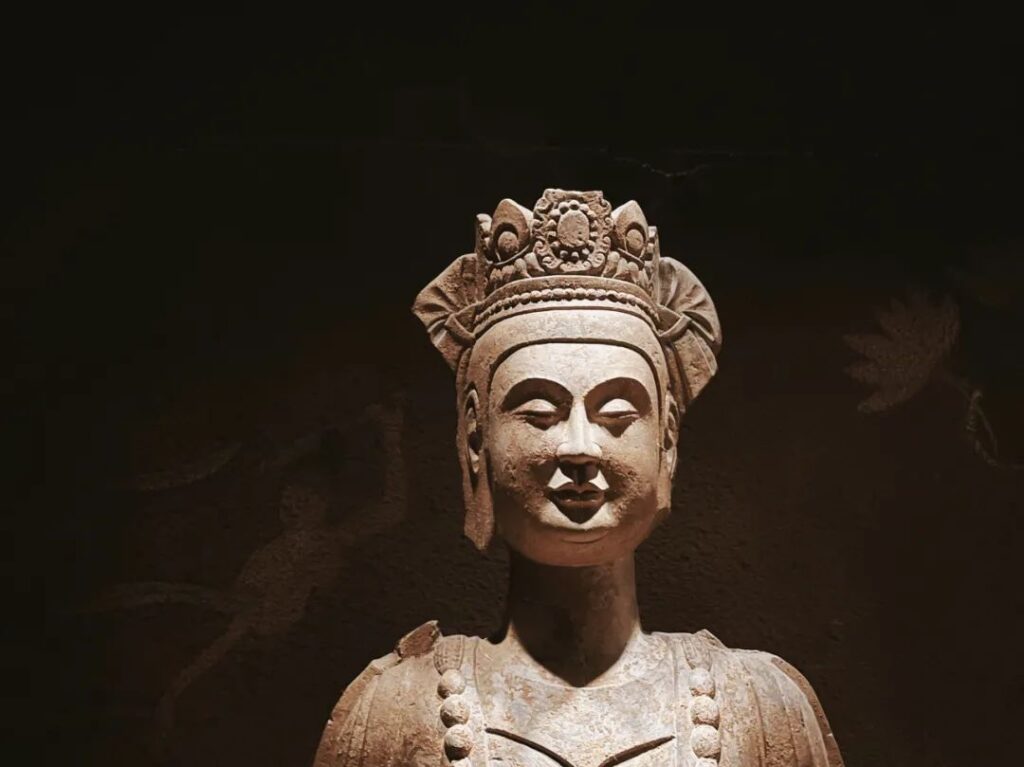
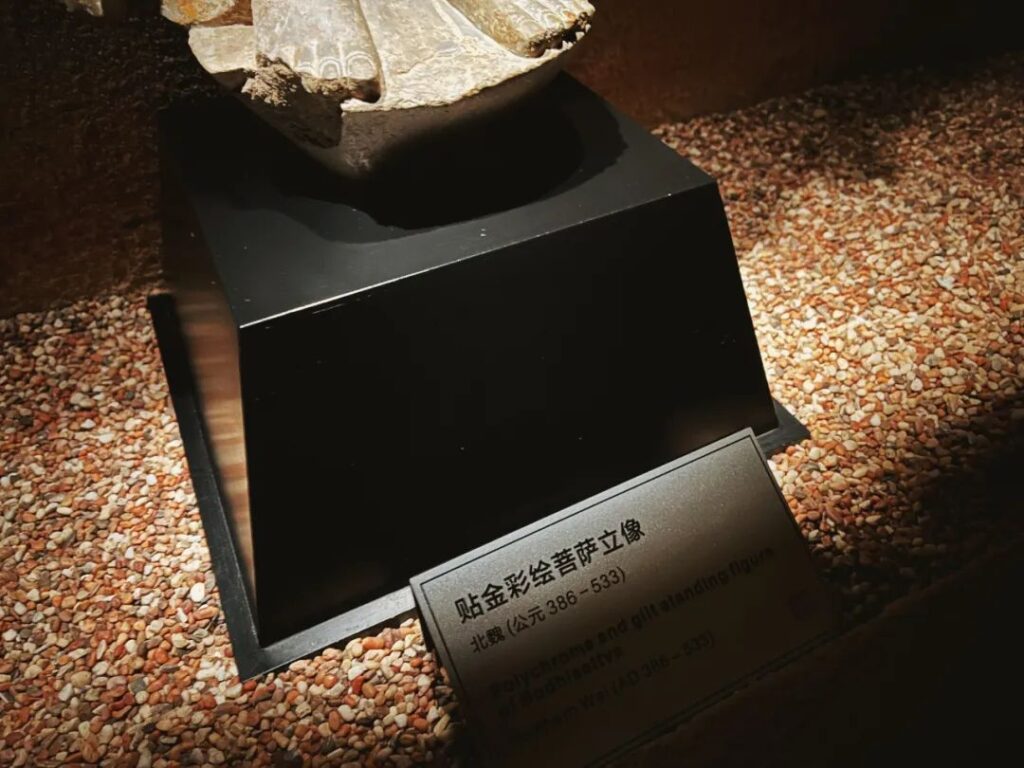
One realizes that private museums don’t necessarily take the “big and comprehensive” approach – the exhibits reflect the personal interests and acquisitions of the collector (in this case, Mr. Ma’s apparent disinterest in paintings and calligraphy). The overall atmosphere feels more intimate, like wandering through someone’s personal treasure trove.

The special exhibition this year, titled “Wisdom and Amusement,” showcases the recreational activities of the past, from Qing dynasty playing cards to Mahjong and Pai Gow from the Republican era, as well as classic brain teasers like the tangram, nine-linked rings, and Luban locks – toys that were once ubiquitous in my childhood, but may now be unfamiliar to today’s young generation.

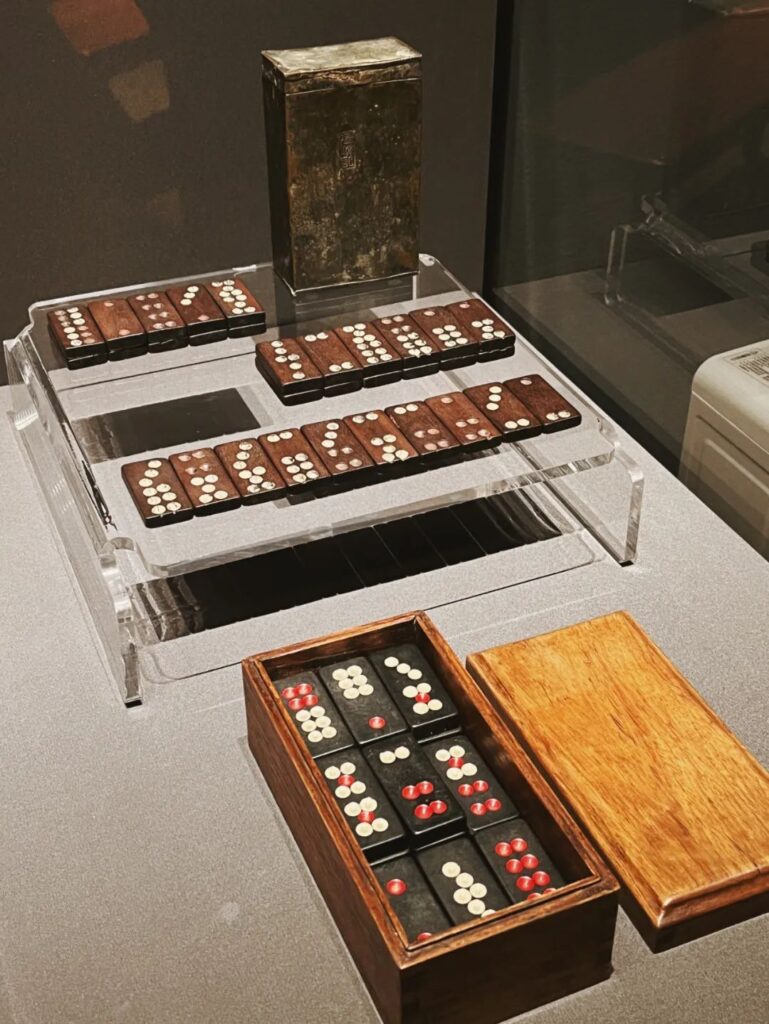

Before leaving, I made the customary stop at the museum shop, where the earrings caught my eye, though the 2,000+ RMB price tag was a bit steep. The staff explained that they are made from antique porcelain shards, with each pair being truly one-of-a-kind.
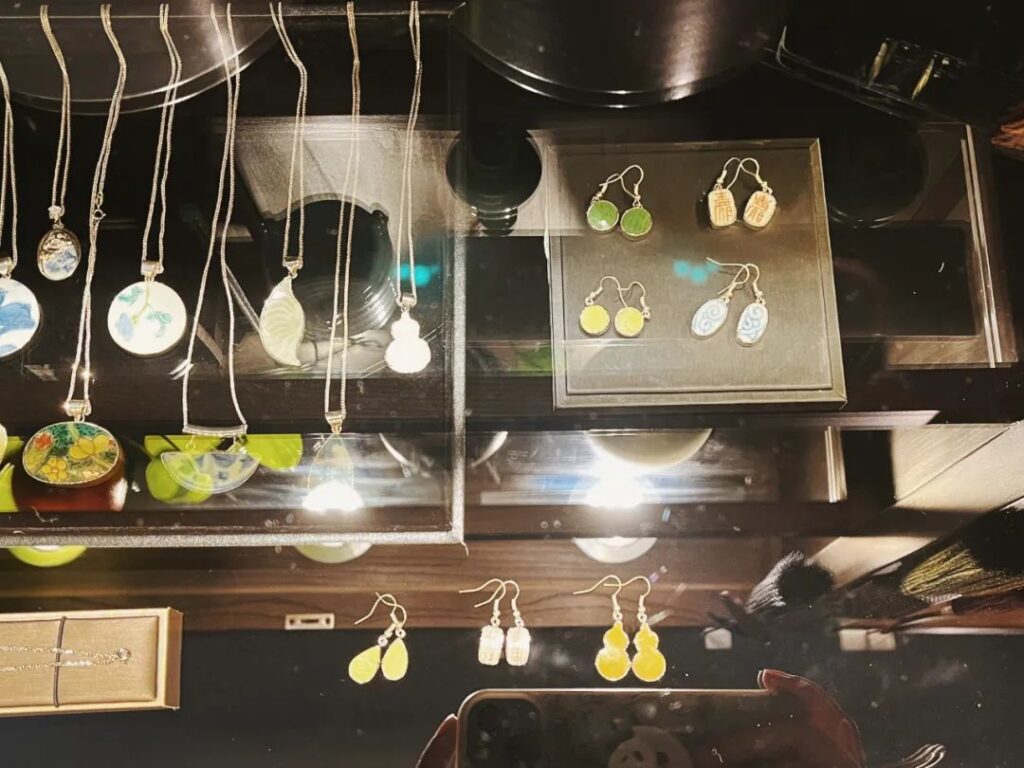
The Guanfu Cats: The Irresistible Residents of the Beijing Branch
I had hoped to encounter the Guanfu cats during my visit to the Shanghai museum, but alas, that wish was not fulfilled. The 30-plus rescue cats that Mr. Ma has adopted all reside at the Beijing Guanfu Museum. With names like Dainanpua, Songtangtang, and Huafeifeibut, each feline has its own distinct identity and responsibilities.
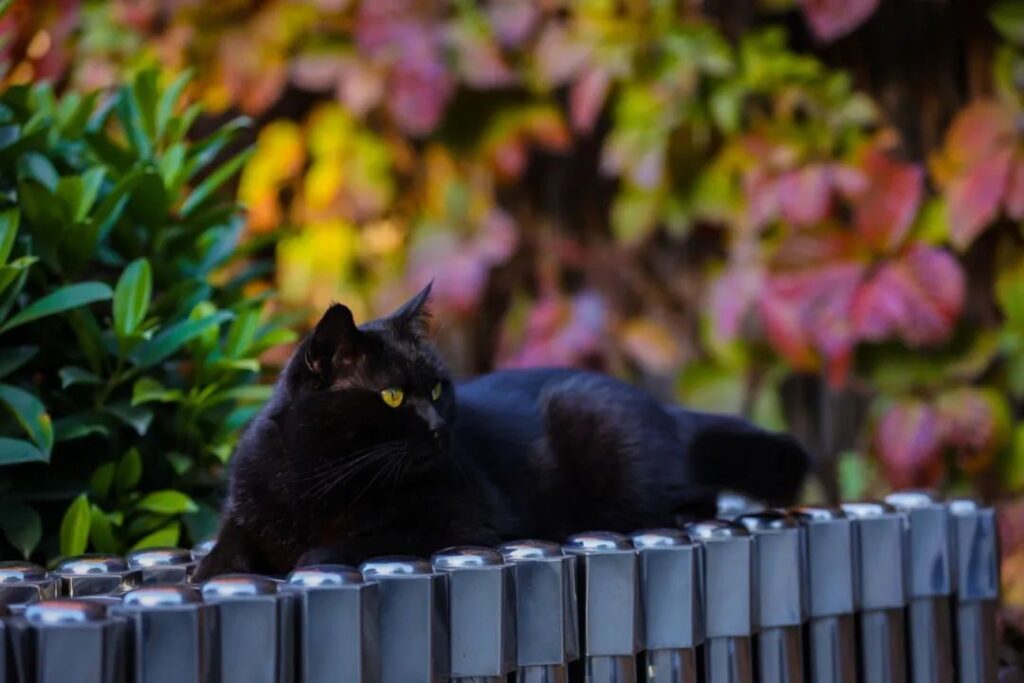
Nine of the cats have been officially appointed as “Cat Curators,” with some tasked with greeting visitors, others handling operations, and a few even specializing in academic work. They’ve gone through a formal hiring process, complete with employment contracts and press conferences.
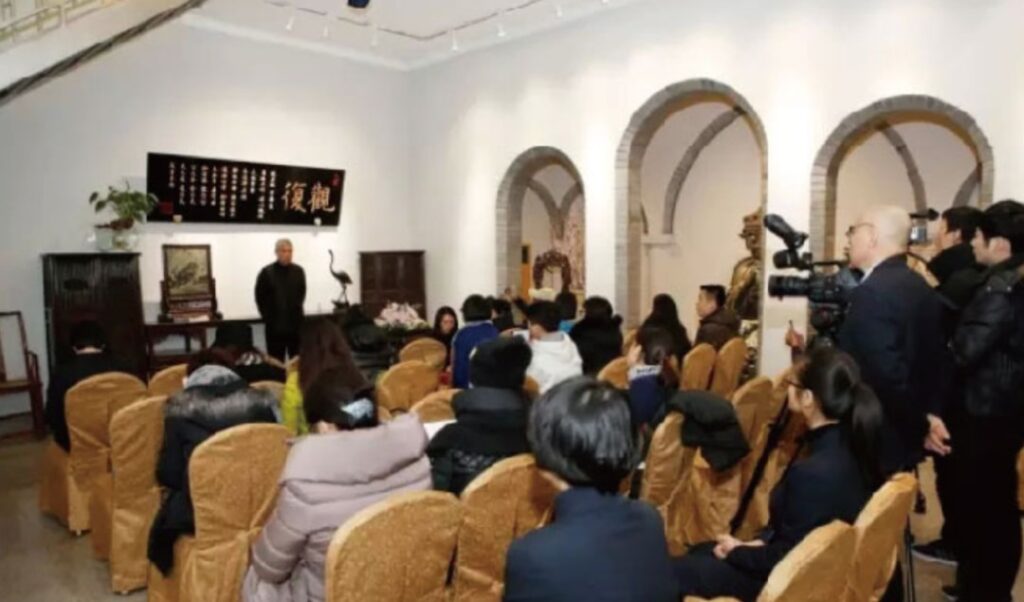
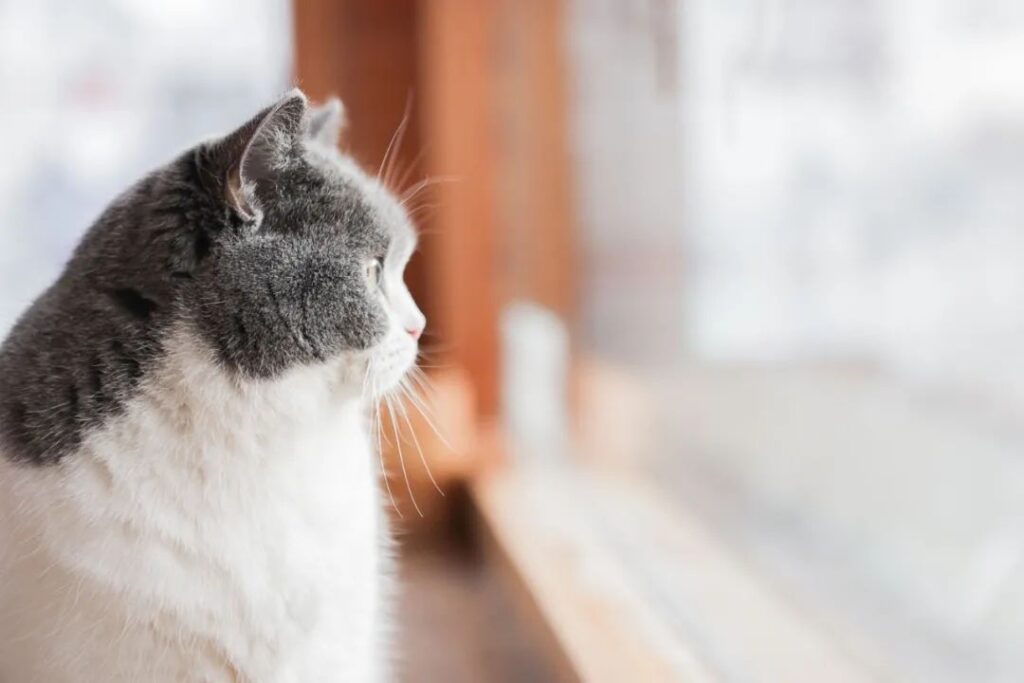
The other “staff” cats are equally “pampered,” enjoying celebrity-level treatment in the museum’s courtyard. Having so many adorable Guanfu cats as companions during a museum visit is truly a blissful experience.
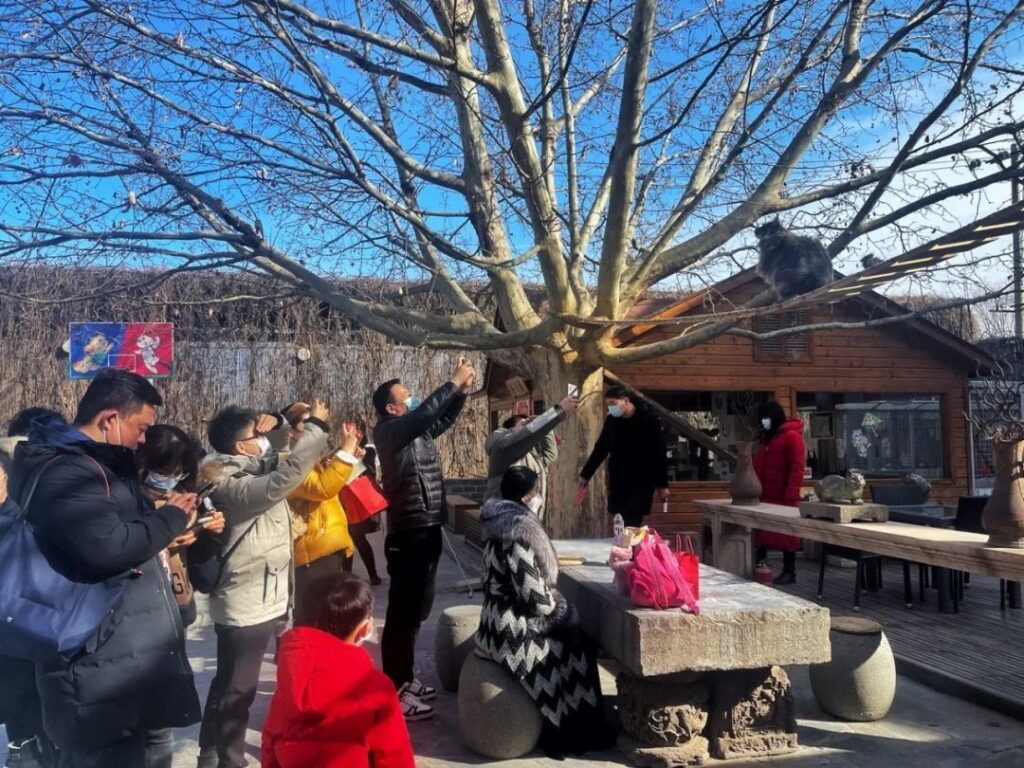
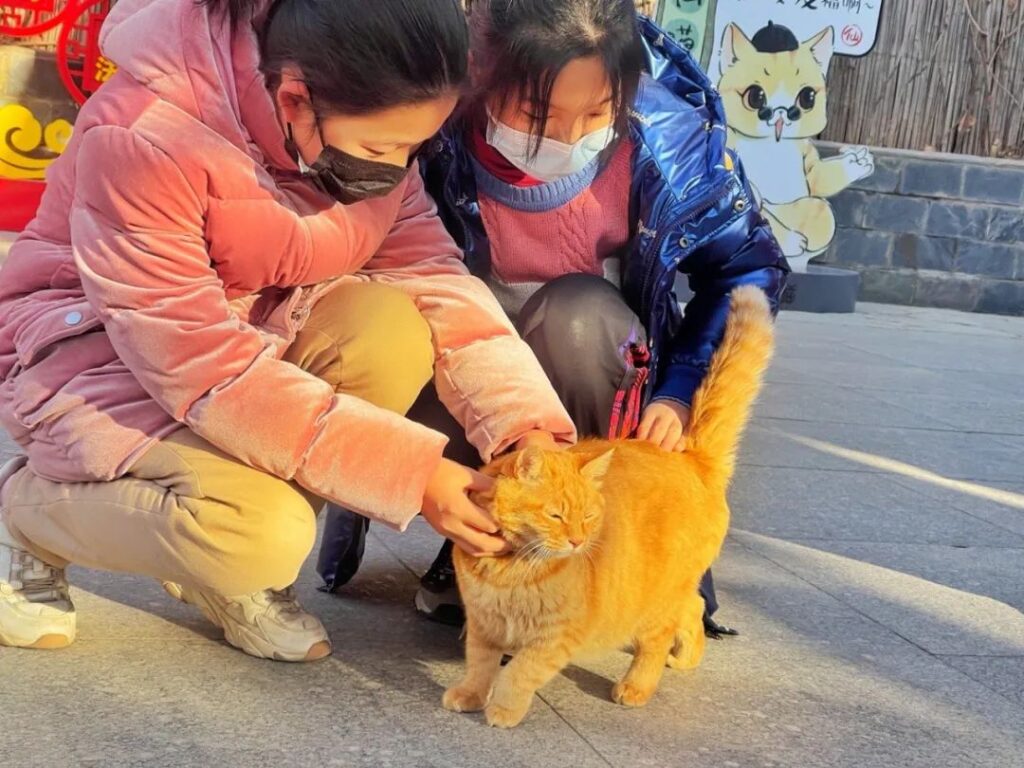
If you’re already lamenting that “cats are better than humans,” I can pile on even more: these museum-dwelling felines are even published authors! Truly, they are the epitome of the “cat life.”
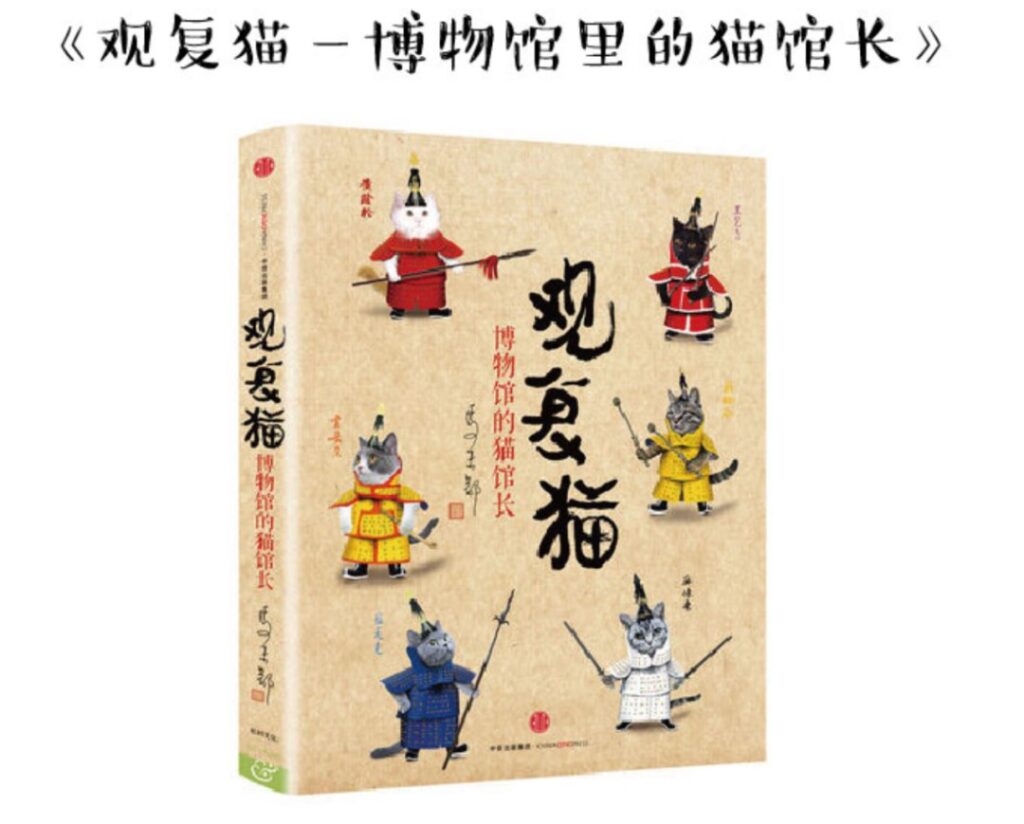
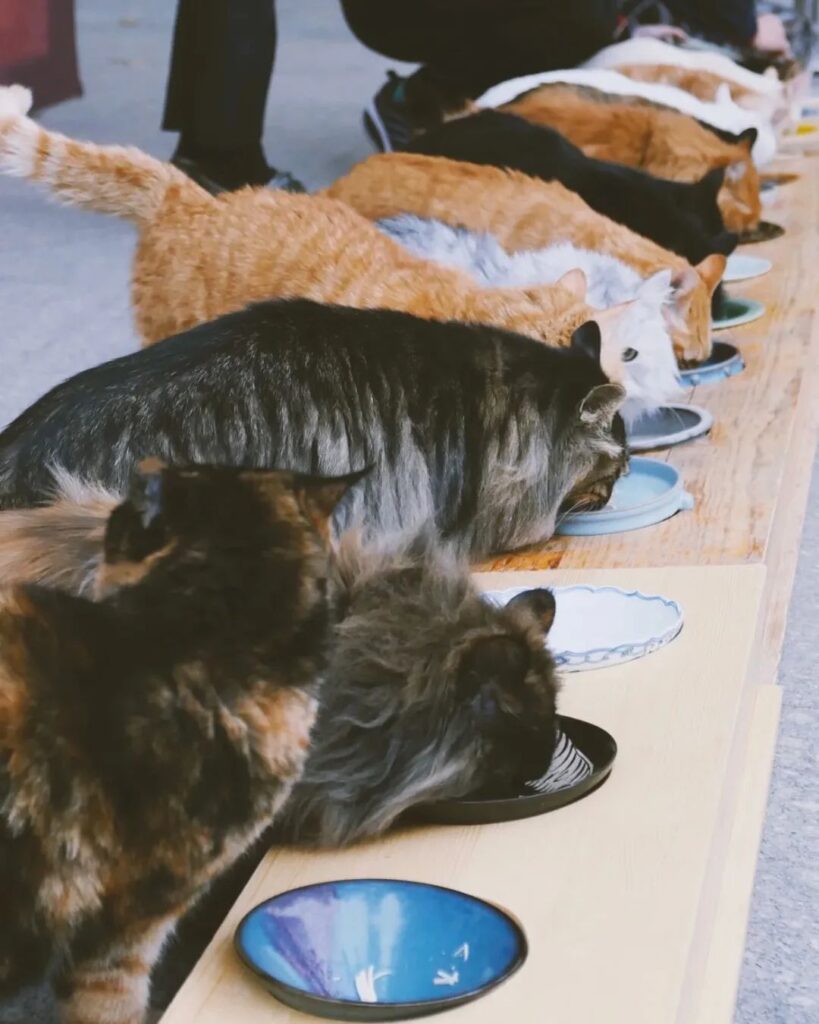

Some have taken the glamour route, posting modeling photoshoots, while others have opted for the knowledge-sharing path, contributing to the “Guanfu 101” series.
The Beijing Guanfu Museum may be located outside the city’s central ring, but the larger campus houses five galleries covering ceramics, furniture, paintings, doors and windows, and decorative art – a more expansive collection compared to the Shanghai branch, which is understandable given that Beijing is Mr. Ma’s primary residence.


If I had to trace the origins of my “obsession” with the Guanfu, it likely stems from that episode where a blogger in Tokyo asked Mr. Ma about the controversy surrounding the Taipei Palace Museum borrowing Zhao Mengfu’s “Sacrifice for a Nephew” calligraphy for an exhibition in Japan, without ever bringing it to mainland China for display. His response was profound:
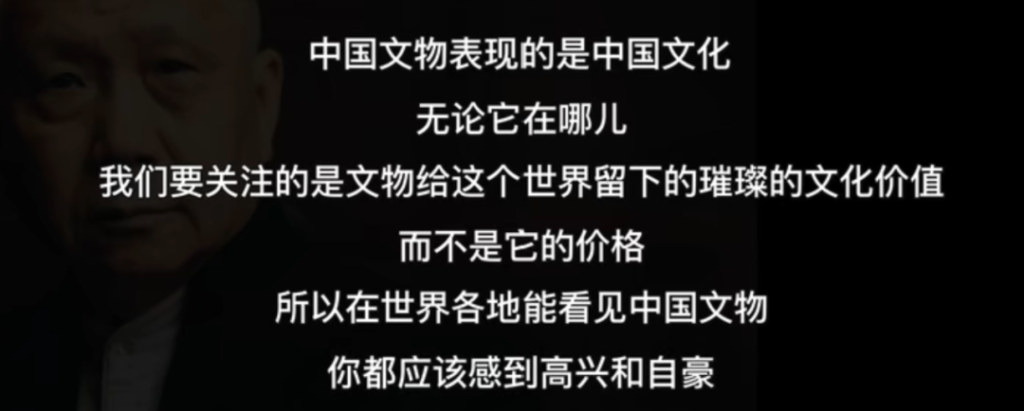
“Even if the physical artifact is taken away, the essence of the culture cannot be stolen.” Mr. Ma himself has also stated that upon his passing, he will donate the Guanfu Museum to the public.
Museums are repositories of humanity’s brilliant civilization, created by all of us, and ultimately returned to society in a continuous cycle. There’s a certain romance to this idea.
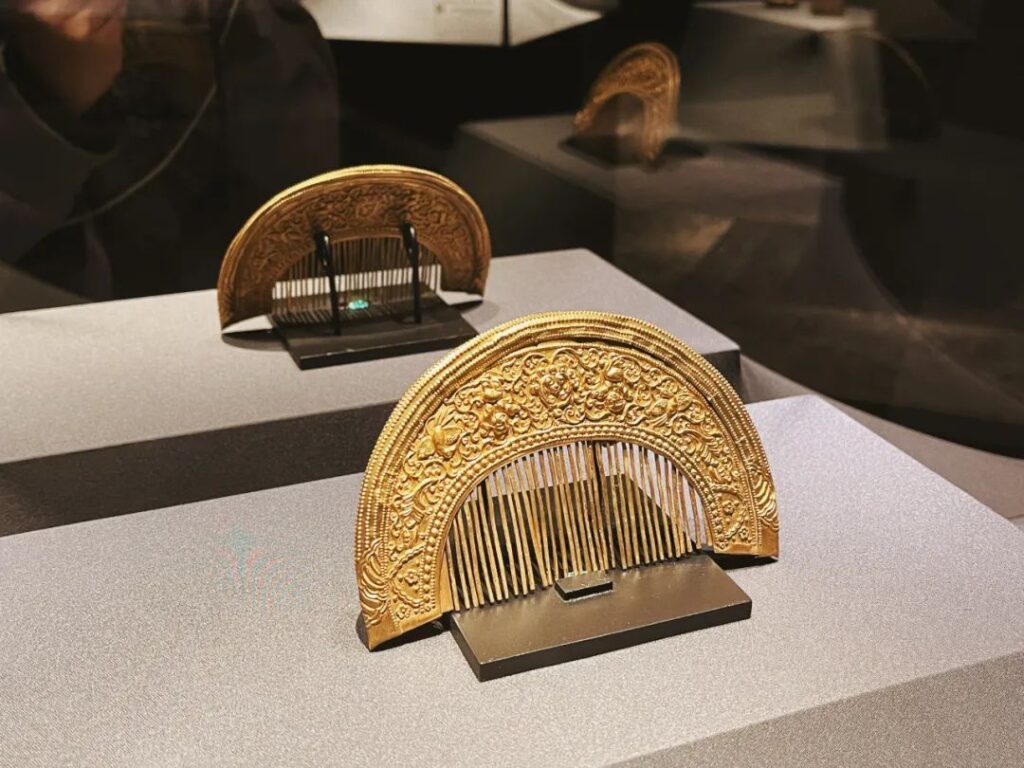
So whether it’s for the museum’s remarkable collections or for Mr. Ma himself, this private institution with the most captivating backstory is truly worth a visit.
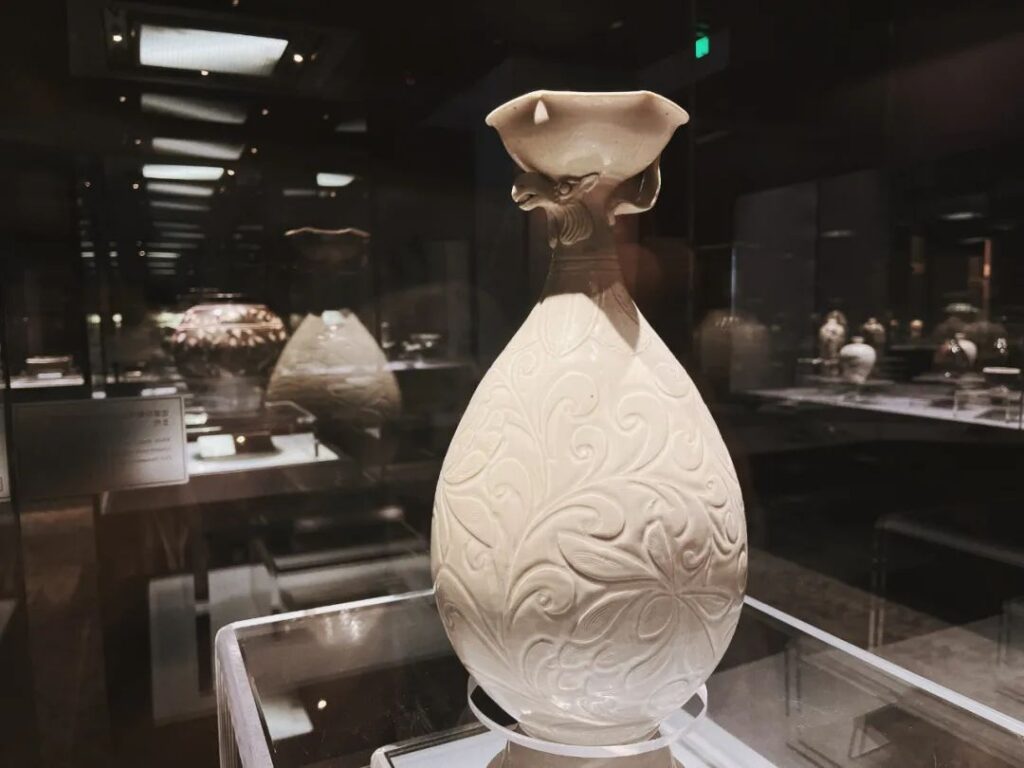
Practical Information:
Shanghai Guanfu Museum
Address: 37th floor, Shanghai Tower, Pudong New Area
Beijing Guanfu Museum
Address: No. 18 Jinnan Road, Dashanzizhuang, Chaoyang District, Beijing
Opening Hours: Monday 10:00-17:00, Tuesday-Sunday 10:00-18:00 (Closed on Lunar New Year’s Eve, and the first three days of the new year)
Ticket Prices: 100 RMB; Guided tour 400 RMB for 60 minutes
Purchasing tickets through third-party platforms may be slightly cheaper, but requires advance booking. On-site tickets have a nicer design, and the Beijing branch even offers limited-edition “Guanfu Cat” tickets.
